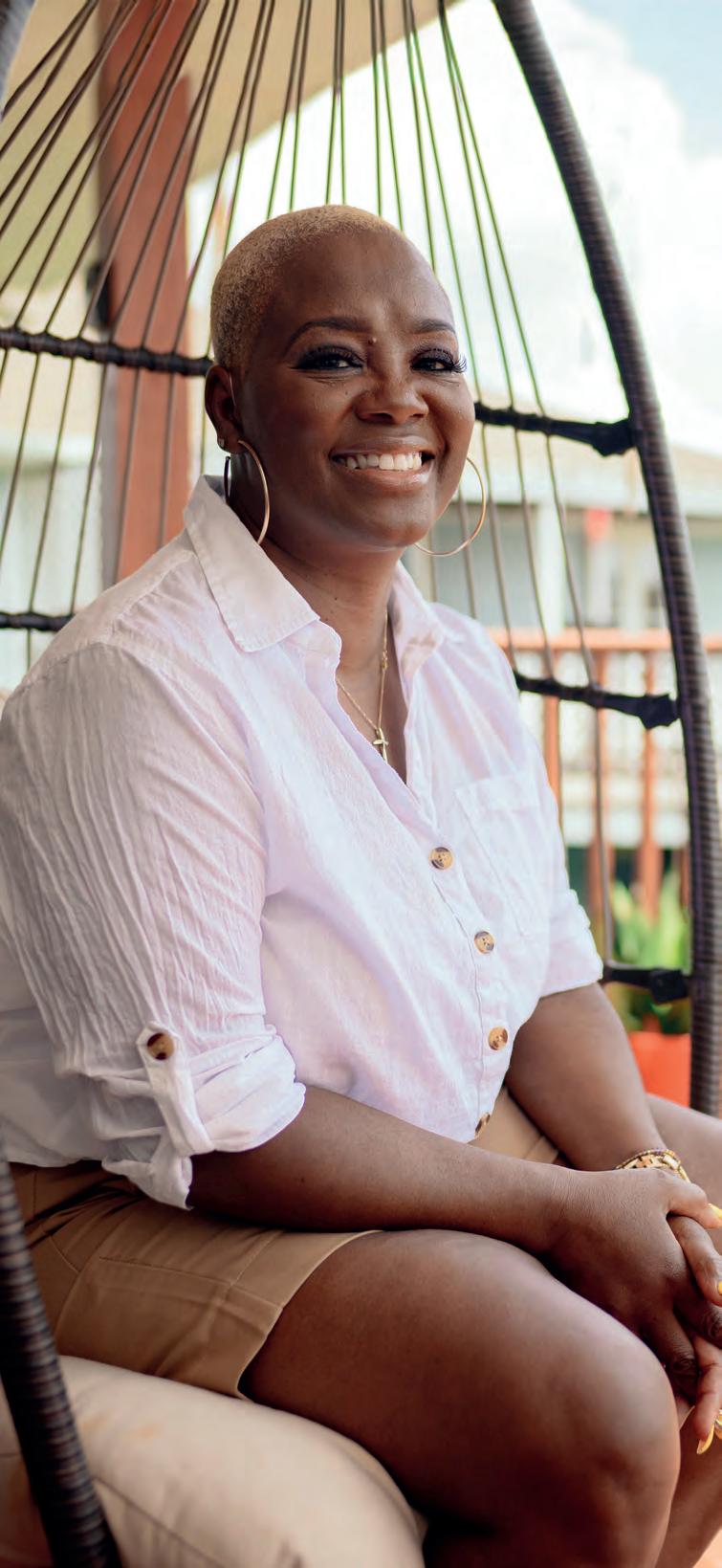
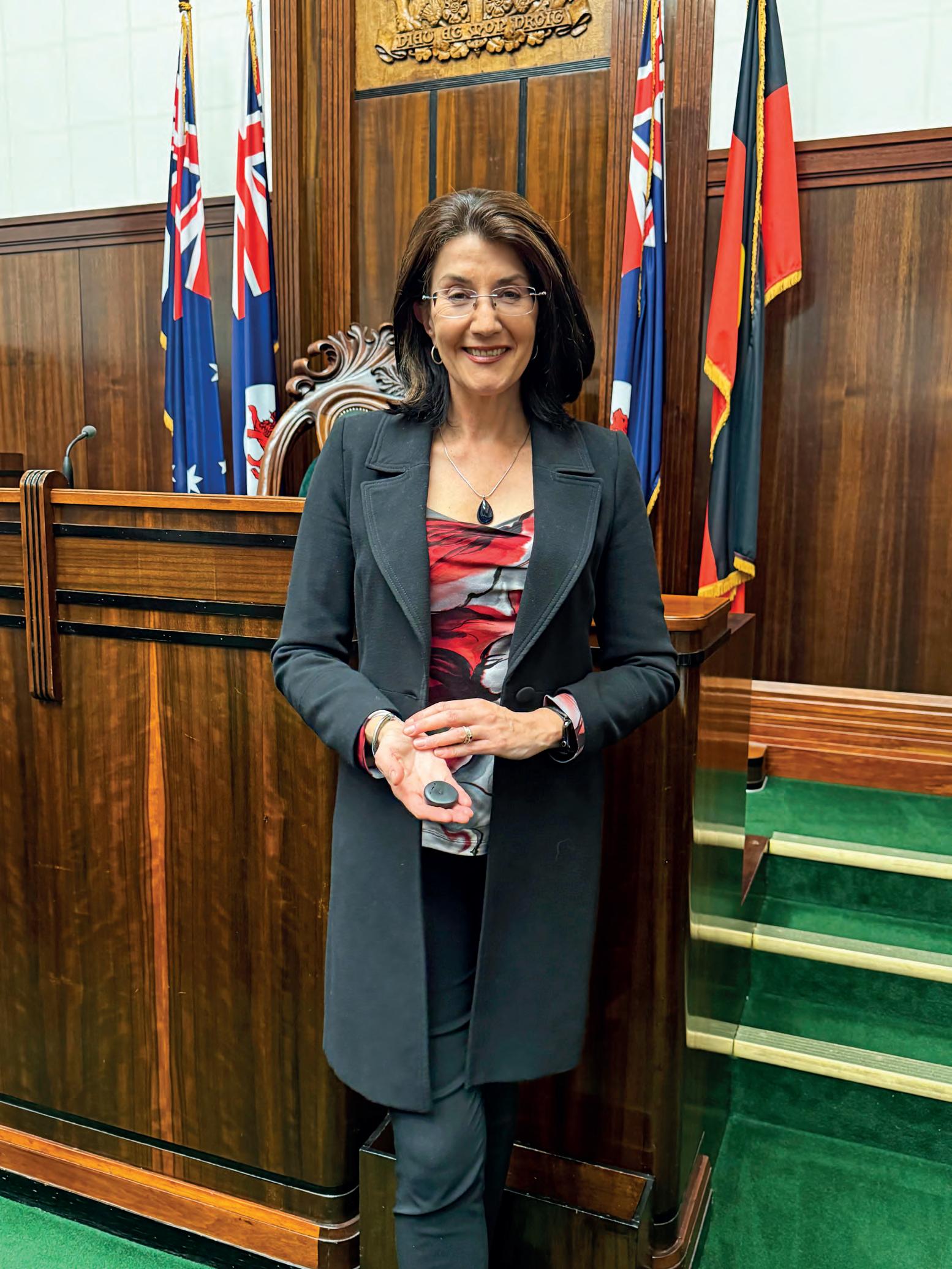
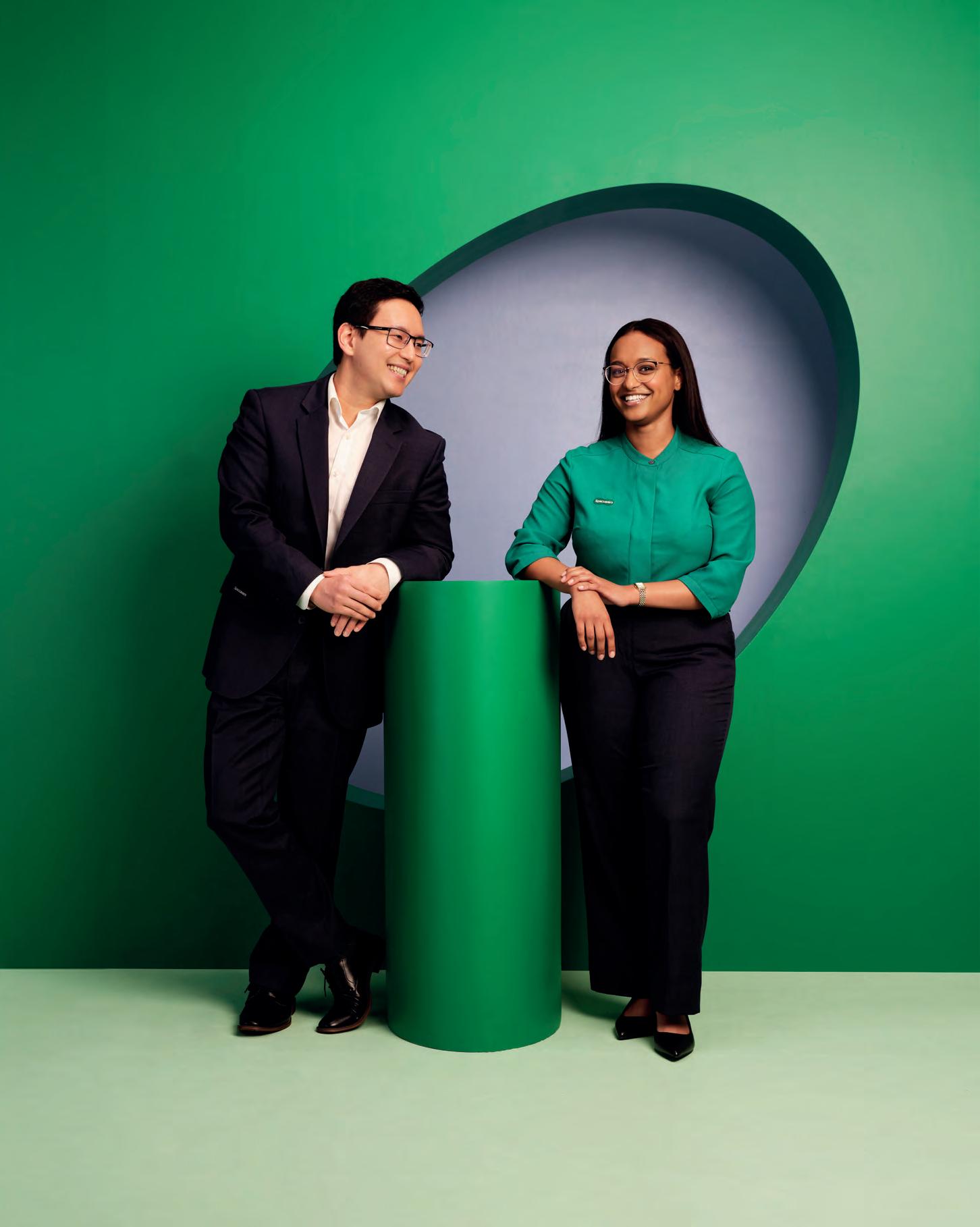
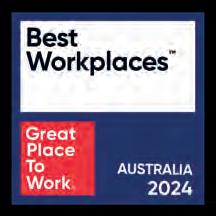





Cochlear has launched a world-first platform featuring its new NEXOS chipset embedded in a novel “smart”, upgradable cochlear implant that is capable of evolving with future innovations.
A significant advance in the history of the technology, the Cochlear Nucleus Nexa System, which the company said is the world’s first and only “smart” cochlear implant system, launched in Australia and New Zealand in June 2025.
The system is described as “like a computer inside your head” and “game-changing technology” that grows with recipients’ needs, future-proofing their implant.
All cochlear implants are powered by a chip (receiver-stimulator device) in the internal implant inside a patient’s head, but unlike existing implants, the new technology
features a chip with onboard memory.
The built-in memory on the implant stores each recipients’ personalised hearing settings (MAPs), said leading cochlear implant surgeon Professor Robert Briggs from Melbourne.

“It’s exciting to see this next iteration which has been between 10 and 20 years in the making and we hope to see big improvements in the outcome,” he told HPA. “The difference is the ability to have the program stored inside the internal implant, rather than just being stored in the external sound processor, allowing for automatic updates which makes it easier for audiologists to maintain and service patients.
“We hope it will not only provide better function, but also better sounds – quality and clarity.”
Mr Ravin Nand, general manager of Cochlear Australia and New Zealand, said: “The implant is where the technological advancements are, the breakthroughs that we have never seen before.
"It’s a whole system launch – the new system combines more than 40 years of proven reliability of our trusted implants and technology leadership, with a new cutting-edge chipset called NEXOS. The chipset is built on more than 10 years
An Australian doctor and university professor, plus the RACGP, believe the increasing expansion of pharmacy prescribing, including for ear infections, threatens patient safety.
Australian National University
Associate Professor Louise Stone said she was concerned there was "great danger" in expanding pharmacy prescribing, while Royal Australian College of General Practitioners Victoria chair Dr Anita Munoz said it “threatened patient safety”.
Victorian Treasurer Ms Jaclyn Symes announced in the State Budget on 20 May 2025 that Victoria’s pharmacy prescribing
trial would become permanent with pharmacists able to prescribe for an extended 22 common conditions, including ear infections.
The Tasmanian Government announced in its 2025-2026 Budget it would also expand pharmacist prescribing to include ear infections. NSW and South Australia previously announced similar plans, and Queensland and Western Australia already have pharmacy prescribing for ear infections.
A/Prof Stone believes there is danger viewing healthcare as a commodity, because the job is not supplying a treatment but involves a careful diagnosis. When a pharmacist supplies antibiotics
for a red ear, presuming it is otitis media, the majority of people would be fine, she said. However, most uncomplicated ear infections did not need antibiotics, she said.
“It’s very rare that there is a serious illness like a cancer or invasive bony lesion in the ear, but it happens,” she told HPA. “It’s very common that a viral infection is present that doesn’t need antibiotics but it may need other treatment. "
of research and development by Cochlear.”
He said it was akin to a smartphone for hearing, with users able to upgrade to new features and innovations over time without needing new external hardware.
“Just like a smartphone update, it ensures people stay connected to the latest technology seamlessly,” Nand said. “It’s a gamechanger because of more sophisticated internal electronics, greater capabilities and being more future ready.
The mapping process details specific settings or programs that optimise functionality of the implant for each patient which matches their auditory abilities and provides optimal speech intelligibility. It does this by adjusting electrical

ASOHNS 75TH ANNUAL SCIENTIFIC MEETING
Pharmacists seemed to train online for a year with some supervision to cover all these conditions, she said. "But I don’t know how competent they can possibly be at the end of that," she said. "There’s a reason we spend at least three years on top of
continued page 8
ENT surgeons from around Australia and overseas heard about innovations at the forefront of the field during the Sydney conference. Dr Ross Harrington received the 2025 ASOHNS Society Medal for Distinguished Service. page 42

1
86% of participants performed better with Signia IX compared to leading competitor
Signia’s Integrated Xperience (IX) with RealTime Conversation Enhancement is designed for real-life group conversations - automatically tracking and enhancing multiple voices, even in noisy settings.1
2

References
Unmatched Compatibility. Effortless Connectivity
Signia is setting a new benchmark for Bluetooth Classiccompatible hearing aids. The Pure Charge&Go IX BCT offers seamless streaming with most major phones and computers, delivering up to 36 hours of battery life.
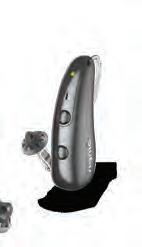

1 https://www.audiologyonline.com/articles/improving-speech-understanding-in-noisy-29273
3
Smarter Support with AI-Powered Assistance
IX includes a real-time AIPowered Assistant, helping wearers optimise their hearing when they need it most. Backed by 5 years of real-world data. In fact, 69% of users found it helped them get the most from their devices.2

2 https://hearingreview.com/hearing-products/testing-equipment/fitting-equipment/assistant

Patients before profit Audiologists including Dr Meg Miklosvary (above) discuss ethical audiology and sustainable private practice.

Multi-streaming first
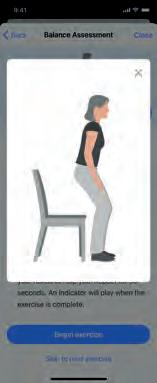
The world-first Balance Assessment Tool in Starkey’s EDGE AI hearing aids helps wearers avoid falls.

WS Audiology’s Signia IX hearing aids have a global first feature enabling wearers to hear multiple people talking in noise.
Banking on better hearing
Central Australian Aboriginal Congress audiologist Kathy Currie is the instigator of the Specsavers Hearing Aid Bank.
Each time we start planning for the next edition of Hearing Practitioner Australia could we write about that we haven’t covered yet?” But I never pause for too long because there is always so much happening in our thriving and growing industry.
This edition we cover a world-first breakthrough from Cochlear, a future-proofed cochlear implant with a memory chip in the internal implant that will ensure recipients stay up with new innovations. We delve into breakthrough hearing aid technology: a global-first feature in WS Audiology’s Signia IX range that enables wearers to hear multiple people speaking in a noisy background, and Starkey’s world-first Balance Assessment Tool to help reduce falls in Edge AI wearers.
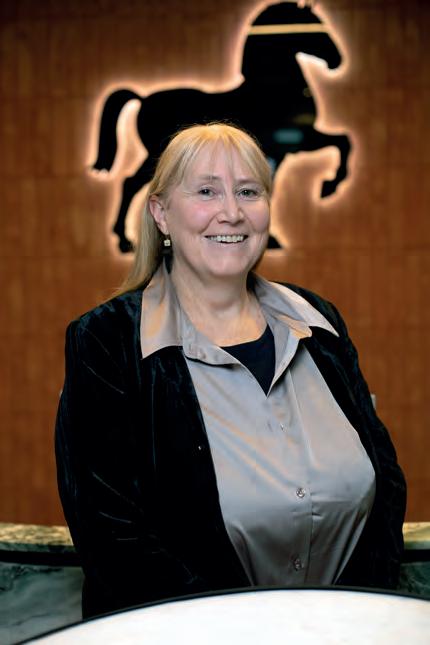


We profile inspirational Tasmanian health minister the Honourable Ms Jacquie Petrusma MP. As our first Australian politician with a cochlear implant, she is a role model to young and old alike.
Another inspirational story comes from Indigenous deaf professor Dr Scott Avery who has been appointed to the Hearing Australia board. Also doing invaluable work is NT audiologist Ms Kathy Currie from the Central Australian Aboriginal Congress who has established the Specsavers Hearing Aid Bank to donate free hearing aids to adults in need who can’t access them elsewhere.
We pull the curtain back on the Hearing Health Sector Alliance, the nation’s peak body for the sector that has the ear of government and policymakers. The behind-the-scenes lobbying it conducts goes a long way to maintaining and improving hearing health care for the nation.
Our feature on ethical audiology provides tips on how to practise ethically while maintaining a sustainable business, and for students, graduates and those looking for a career change within the profession, we’ve got tips and advice from audiologists and university lecturers.
On the conference scene, there’s a wrap of the Audiology Australia 2025 Conference in Adelaide, and the ASOHNS 75th annual scientific meeting in Sydney, both of which had record attendances.
HELEN CARTER Editor
Discover a new world of opportunities with our most intelligent portfolio yet Lead the way AVAILABLE NOW!


Let clients enjoy life to the fullest with our new intelligent portfolio that will let you illuminate life and bring speech clarity and connectivity for all.
With Beltone Envision, get ready to discover how GN is taking a human approach to AI. Intelligent solutions for you and your clients, without compromise.
Beltone Commence combines our proven technologies to bring greater clarity and ease to everyday connections. Small, sleek and connected solutions for mild to profound hearing loss.
To learn more, contact your local Beltone Account Manager.



Just as HPA went to print, HEALTHSCOPE, one of Australia’s largest private health care providers, announced it had entered administration. It said its 37 hospitals remained open and operating on a business-as-usual basis with no impact on its 19,000 staff, doctors or patient care. Healthscope's website shows 108 ENT surgeons practise at its hospitals. Its lenders have appointed McGrathNicol Restructuring to work with Healthscope management to complete an orderly sale. The Healthscope board appointed partners from KordaMentha as administrators. The Commonwealth Bank gave McGrathNicol
Weird
A Scottish man had a tiny Lego piece stuck in his ear ‘for the best part of 20 years’ causing hearing loss until it popped out. The Daily Mail said Darren McConachie, 30, believed he was going deaf at 24 and saw a doctor, receiving antibiotics for a presumed ear infection. He later woke with his left ear in agony and felt pressure before feeling something dislodge before a Lego piece covered in wax came out. His hearing is now good.
Cambridgeshire Police in the UK have issued cards that deaf people can use during an emergency to communicate with others, the BBC reports. They say, "I am deaf" and are distributed by Cambridgeshire Deaf Association (CDA). A QR code links to a video service offering remote interpretation via a video call. The CDA said many deaf people found it hard to communicate with police but this would enable use of the sign video service.
Wacky
Canadian researchers have made an AudioDome of speakers that can create an immersive sound experience which reproduces sound sources at any location when the listener is placed in the middle. They used it to test the limits of ambisonic sound reproduction.. Humans' spatial acuity is high in front of faces but decreases around the sides of the head. Their experiments obtained similar results from listeners in the AudioDome, proving the array can reproduce sound locations at a spatial scale beyond human limits of perception.
a new $100 million funding package to support operations during the sale process. Health Minister Mr Mark Butler said there would be no taypayer bailout. IN OTHER NEWS, children with hearing difficulties who experience early reading struggles are at risk of developing poor mental health outcomes, according to world-first research led by Australian Catholic University. The study in 15,000 children aged five to 11 in Australia, the US and UK, was the first to examine the relationship between the reading-related mental health of children with reported ear and hearing difficulties (rEHD). Dr Andrea Salins, who led the study, said when a child was identified with hearing difficulty, their literacy needs were often
monitored by teachers and clinicians but the results suggested it was also important to monitor mental health symptoms. FINALLY, the Northern Territory Government is investing $120,000 in 2025-2026 for Auslan interpreting services across the NT through Deaf Connect. The government said the funds would ensure continued availability of local, face-to-face Auslan interpreting services. This includes critical access in high-priority situations such as hospital presentations, emergency warnings, and emergency press conferences, while also supporting broader communication and inclusion needs for deaf Territorians. Mr Brett Casey, CEO of Deaf Connect, said it was a vital step toward inclusion.

Published by:
379 Docklands Drive, Docklands VIC 3008
T: 03 9690 8766
www.primecreative.com.au
Chief Operating Officer
Christine Clancy christine.clancy@primecreative.com.au
Publisher Sarah Baker sarah.baker@primecreative.com.au
Managing Editor Myles Hume myles.hume@primecreative.com.au
Editor
Helen Carter helen.carter@primecreative.com.au
Business Development Manager Luke Ronca luke.ronca@primecreative.com.au
Client Success Manager Karyssa Arendt karyssa.arendt@primecreative.com.au
Head of Design Blake Storey
Art Director Bea Barthelson
Subscriptions T: 03 9690 8766 subscriptions@primecreative.com.au
Cover – Image: Jacqui Petrusma.


The Virtual Conference on Computational Audiology is free to attend. It aims to unite hearing scientists, clinicians and audiologists to stimulate innovations for hearing loss. computationalaudiology.com.
The Hearing Business Alliance 2025 seminar theme is ‘Innovate to elevate: Transforming small business models’. It will be at Mercure Perth from 9am to 5pm. hearbusiness.com.au
continued from page 3
stimulation parameters for each electrode in the cochlea which then stimulates the auditory nerve to send sound signals to the brain. "Patients can easily transfer their MAPs (from the chip) to a new sound processor if their current one is lost or damaged,” Rand said. Apart from the internal implant, the system also features a new external sound processor.
Prof Briggs, who operates at The Royal Victorian Eye and Ear Hospital, The Royal Children’s Hospital, and St Vincent’s Private Hospital, said that instead of the patient’s hearing information being stored only in the external sound processor, it is now on the internal implant. This means it is always with them.
“Existing internal implants are static and cannot store software like the Nucleus Nexus can,” he said.
“This unlocks the potential for clinicians (i.e. audiologists) to reduce their costs to serve patients because they’ll not spend as long performing mapping since information is stored in the implant.”
Audiologists traditionally program the implant on a laptop and send the person’s individual hearing information from the sound processor back into the internal implant. Now, the memory chip stores this information and sends it from the internal device to the sound processor.
“Previously the internal implant was programmed by an external sound processor which converts sound into electrical signals,” Prof Biggs said.
“Now that information will be stored in the internal implant, which allows ‘smart syncing’, a new process, where instead of the program coming from outside (the sound processor), it’s coming from inside the implant to the outside which is a major advancement.”
Nand added: “To make hearing easier, the Nucleus Nexa System intuitively responds to changing needs throughout each day.” Its Forward Focus feature uses artificial intelligence, which enhances sound clarity in noisy environments. This feature is already available through the Nucleus Smart App for existing cochlear implants.
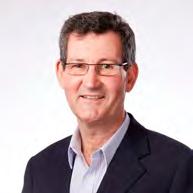
ITERATION WHICH HAS BEEN 10 TO 20 YEARS IN THE MAKING, AND WE HOPE TO SEE BIG IMPROVEMENTS IN THE OUTCOME.”
PROFESSOR ROBERTS BRIGGS, THE UNIVERSITY OF MELBOURNE
Another feature is enhanced smartphone compatibility, with phone apps interfacing with the new implant, Nand said.
“Users enjoy clearer sound streamed directly from compatible mobile devices and, in future, at airports, concert venues and more using Bluetooth LE Audio and Auracast broadcast audio,” he said.
Battery life has also risen from 12 hours to 15-16 hours. In future, firmware could upgrade it even more via the app, Nand said. “People with this system can experience new features and advancements via updates to firmware in their smart implant and their sound processor over time," he said. “This groundbreaking technology is one of the biggest developments in innovation in cochlear implants. We used to make implants and it stayed that model for the rest of the patient’s lives. The difference is this is a ‘smart’ implant which is upgradeable, so it moves, evolves and learns through the journey of innovation that cochlear implants bring about.” See also p34.
continued from page 3
our medical training to master GP skills. I would feel more secure with audiologists (diagnosing/prescribing) who focus on the ear all the time.
"After spending 35 years in the business, and training generations, I know it takes a long time to learn to be safe. I can’t see how pharmacists can take shortcuts like this, and still be safe. They are highly skilled in medication management, but diagnostic skills take time to learn. GPs aren’t perfect of course, but we train for 11+ years, and a lot is in diagnosis.”
Ear problems may have underlying causes including poor nutrition, and chronic, neurological or work-related conditions that need assessment, she said.
Additionally, bacteria were becoming more resistant due to antibiotic overuse.
“Someone has to say no to their use, so we can protect vulnerable members of the community," A/Prof Stone said. "In UTI (urinary tract infection pharmacy prescribing) trials, 98% of women were given antibiotics, and now we have widespread resistance to a common antibiotic." Experience with the North
Queensland UTI trials also showed few were referred to GPs and there was no record sent to the GP, raising the risk of fragmented services, she added.
Dr Munoz said the Victorian Budget announcement was “deeply disappointing and a step backwards in achieving best care outcomes for patients”.
“Patient care will be compromised," she said. “Patient safety must come first ahead of pharmacy owner profits."
Dr Munoz said expanding pharmacy prescribing may seem like a straightforward and convenient answer to improving access to care but it was not the right solution. "Patients are better off booking a consult with a regular GP who knows them, and their history," she said. Expanding pharmacy prescribing had failed overseas, she added. “Pharmacists don’t have the training required to properly diagnose medical conditions, and this raises the risk of inappropriate treatment, and misdiagnosis,” she said. “GPs spend a decade training to diagnose conditions; this is not something that can be easily taught over a few weeks via an online course."

Pharmacists don’t have the training required to properly diagnose medical conditions, the RACGP says. Image: Joke Phatrapong/stock.adobe. com.
Dr Munoz said chronic disease management also did not belong in the retail pharmacy space.“Expanding pharmacy prescribing powers also fragments care, leading to a less well-connected health system and poorer patient health outcomes," she said.
"We know from other jurisdictions that very few pharmacy consults lead to a GP referral, so the GP is effectively kept in the dark. This is risky for patients with multiple, chronic conditions who need to be carefully managed by a regular GP.”
Women can hear better than men, according to a study which found that hearing amplitude is more influenced by sex than age, and environment also plays a role in hearing. The researchers found women showed an average of two decibels more sensitive hearing than men across all populations studied. “This could be due to different exposure to hormones during development in the womb, (or) due to men and women having slight structural differences in cochlea anatomy,” they said in Scientific Reports. Sex was the leading factor explaining differences in hearing sensitivity, with the second most significant influence being the environment which not only affected the response to volume but also the range of frequencies of sound perceived, they said. The study was in 450 people across five countries.
Hearing loss is linked to a heightened risk of developing heart failure, and psychological distress caused by hearing impairment has a key role, new research suggests. The study, in Heart on 8 March 2025, was the first to examine the association between objectively measured hearing ability and the risk of developing heart failure (HF). “Hearing impairment may serve as a potential marker for HF risk, highlighting the importance of integrating hearing health assessments into cardiovascular risk evaluation frameworks,” researchers said. They mined data of 164,431 UK Biobank participants. After 11 years, 4,449 developed HF. Poor hearing ability was associated with a higher risk of HF in the general population. People who wore hearing aids and those with poor hearing who did not wear hearing aids had a similarly significant increase in HF risk.
The Department of Health and Aged Care’s Hearing Services Program (HSP) has made changes to the Revalidated Service Request process to streamline approvals and ensure requests comply with program requirements. Changes began on 22 April 2025. All requests must now include supporting evidence and expire three months after submission. Approved revalidated refittings must now take place within three months of the date of submission of the request. The department said the changes aimed to reduce follow-up requests for extra information from service providers, speed up the assessment process and minimise recoveries of non-compliant claims. A provider notice stated a recent audit had revealed that many revalidated service claims lacked sufficient supporting evidence. This meant responses to submissions were delayed by the program having to seek extra information from providers to support a decision.
Prescription hearing aids fitted by audiologists provide patients with “significantly better outcomes” than over-the-counter (OTC) versions, according to a randomised clinical trial performed in America.
Results suggested that while lower cost OTC models, and OTC+ devices where audiologists provided limited services for OTC hearing aids, were both effective, the best outcomes were achieved with audiologist-fitted prescription hearing aids where practitioners followed the best practice service model.
The authors said their trial in 245 participants with mild to moderate hearing loss, mean age 67, introduced new insights which showed the audiologist fitted prescription devices were superior..
“The service model in which audiologists fitted prescription hearing aids (HAs) following best practices yielded significantly better outcomes compared with two over-the-counter (OTC) service models, although both OTC models still produced generally positive results,” they said.
Participants who wore audiologist-fitted prescription hearing aids reported higher satisfaction and were 2.5 to 3.25 times more likely to wear their hearing aids all the time than those with OTC devices.
“We found no evidence suggesting that OTC+ was superior to OTC, indicating the limited services provided in OTC+ did not enhance outcomes,” they said in JAMA Otolaryngology–Head & Neck Surgery on 15 May 2025.
Participants with audiologist-fitted prescription hearing aids also reported higher satisfaction. Image: Monkey Business/stock. adobe.com.
“The study audiologists observed that when OTC+ participants faced device-related issues, such as acoustic feedback, the available solutions (eg, switching presets) were often insufficient
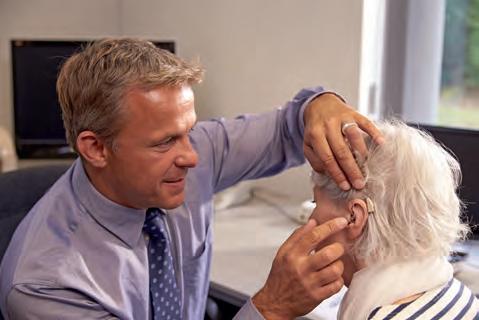
may require more in-depth services, including probe-microphone measures, and greater flexibility in configuring devices using fitting software.”
For the same generation of HAs, high-end and low-end devices yielded similar general patient-reported outcomes in clinical settings.
“The finding that the audiologist fitted prescription devices outperformed OTC (ones) raises an important question: was the outcome difference driven by the service itself, the participant’s personal interactions with audiologists, or both?” they asked.
While their trial could not directly address this, evidence suggested the difference was mainly driven by service, they said.
Although they did not find high-end HAs provided better outcomes than low-end ones, they said many low-end HAs incorporated technologies that were considered advanced in earlier generations. Their study did not compare devices across different generations.
Participants, who were older than 55 years with no previous HA experience, were randomised to one of six parallel groups, representing factorial combinations of three service models and two technology levels.
Two behind-the-ear prescription models (one high end at A$6,868 per pair) and one low end ($1,717 per pair) were used, both from the same manufacturer.
OTC versions were simulated using prescription HAs. Two models of prescription HA were used: a high-end HA with advanced features and a low-end HA.
The primary outcome measure was the Glasgow Hearing Aid Benefit Profile (GHABP), administered using ecological momentary assessment (EMA). EMA-GHABP was conducted preintervention and throughout the seventh week postintervention.
After controlling for preintervention scores, the postintervention EMA-GHABP global score (ranging from one to five) for the prescription devices was significantly higher (indicating better outcomes) than for OTC+ and OTC by 0.33 points and 0.32 points, respectively.
The difference between OTC+ and OTC was not significant but EMA-GHABP global scores were close to four points, indicating positive outcomes.
A new $82 million clinical teaching building at La Trobe University, Melbourne will host audiology training, research and offer audiology services to the public, as well as help relieve Australia’s allied health workforce shortage.
The La Trobe University Health Clinic, being built at La Trobe’s Melbourne campus in Bundoora, will be the largest interdisciplinary university clinic in Victoria, helping train an additional 400 allied health professionals each year from 2026.
“The building will house a new audiology clinical service,” a La Trobe University spokesperson told HPA. “It will also house an expanded speech pathology clinic service, led by students under supervision, that will provide an expanded range of speech pathology clinical services.
“The intention of both clinical services is to expand opportunities for students to undertake clinical placements, enabling La Trobe to enrol additional students into both courses.”
Operating as a state-of-the-art healthcare facility serving the public, the centre will

provide cost-effective healthcare for people on public waiting lists and provide students with clinical placements and hands-on experience.
It will offer a range of allied health services to the public including audiology, speech pathology, orthoptics, podiatry, psychology, dietetics and nutrition, physiotherapy, and occupational therapy.
The building, due to be completed in July 2026, is part of La Trobe's $170 million investment in health innovation. It will deliver teaching, research and infrastructure to boost Australia’s healthcare workforce by an extra 4,000 professionals by 2030 in areas of need.
It also forms a key part of La Trobe University City, a long-term development to transform the 235-hectare Bundoora campus into a city that will include world-class sports, research and innovation, education, commercial, retail and residential developments.
Vice-Chancellor Professor Theo Farrell said: “La Trobe is making a significant investment in health teaching, research and infrastructure across key areas of need in both metropolitan and regional areas, helping address Australia's serious health workforce crisis.
“The new infrastructure in which we are investing, including our exciting new clinical teaching building in Bundoora, will offer huge community benefits, including regional development and jobs from capital investments. Our vision is helping to solve a national policy issue plaguing governments and policymakers.”
Professor Russ Hoye, Pro Vice-Chancellor of Health Innovation and Dean of the School of Allied Health, Human Services and Sport, said the new facility would streamline the journey from student to qualified health practitioner. It would add 400 additional allied health professionals to the health workforce each year to 2030.
Draft national guidelines have been developed for cochlear implantation (CI) in adults to address gaps in care, enhance access and outcomes, and boost the number of adults having implants.
The Australian and New Zealand Hearing Health Collaborative (ANZ HHC) has developed draft Cochlear Implant (CI) Referral, CI Evaluation and Candidacy, and CI Outcome Evaluation Guidelines for Adults.
The collaborative’s guidelines working group is seeking feedback before a final version is released mid-year.
The ANZ HHC is a ‘coalition of the willing’ comprising more than 70 volunteer members, including those with lived experience, expertise in audiology, ENT surgery and broader hearing health care.
It is led by co-chairs, audiologists Dr Jaime Leigh from The Royal Victorian Eye and Ear Hospital, Professor Catherine McMahon and Professor Bamini Gopinath from Macquarie University, and ENT surgeon Associate Professor Payal Mukherjee representing the Royal Australasian College of Surgeons.
“The development marks a significant milestone in hearing healthcare,” they said.
“By addressing the gaps in adult CI practices and providing a standardised framework, the collaborative aims to improve outcomes and ensure equitable access to cochlear implants for all adults in Australia and New Zealand.”
The primary reason for developing them was to address the lack of standardised practices for adult cochlear implantation.
“To date there has been no comprehensive framework, applied nationally, to ensure consistent and effective care," they told HPA
“Adults face fragmented care and inconsistent follow-up, leading to suboptimal outcomes. This initiative aims to fill that gap and provide clear, evidence-based recommendations for adult CI.”
The co-chairs said the experience for children being referred for cochlear implants was comparatively more streamlined and consistent due to established guidelines and protocols related to universal newborn hearing screening and the Hearing Services Program.
“There does, however, remain a need for national guidelines for CI in children to be developed and this is being progressed

by a recently established Commonwealth working group,” they said.
Many adults have slipped through the system, with inadequate follow-up and support, they added.
“Inquiries often lead to dead ends, and many adults who could benefit from cochlear implants are not receiving them," they said. "The guidelines will address these issues by providing a clear pathway for diagnosis, referral, and treatment.”
They said a significant challenge had been lack of awareness among GPs and other health professionals about benefits of cochlear implants for adults.

The Nucleus® Nexa™ System enables the world’s smallest and lightest sound processors with all day battery life.1,#,* And it’s all seamlessly connected to an ecosystem that delivers personalised care^ and a world of streaming options.¥






A new tinnitus guideline recommends use of therapeutic sounds, cognitive behavioural therapy, and hearing aids or cochlear implants as needed for treatment.
It also recommends using validated subjective outcome measures as opposed to psychoacoustic measures to monitor the effectiveness of tinnitus management.
But it advises against using herbals, nutraceuticals, supplements, and pharmacotherapy for relief of symptoms.
The Clinical Practice Guideline for Management of Tinnitus Recommendations from the US Department of Veterans Affairs/US Department of Defense Work Group was published in JAMA Otolaryngology Head & Neck Surgery on 20 March 2025.
The guideline, which updated a version from 2014, was based on a systematic review of clinical and epidemiological evidence published from 1 January 2013 to 7 April 2023. It made 25 recommendations including using:
• Validated subjective outcome measures (eg the Tinnitus Functional Index) to monitor the effectiveness of tinnitus management
but not psychoacoustic measurements (eg minimum masking level, pitch, or loudness matching).
• Educational counselling to reduce the functional impact of tinnitus.
• Hearing aids for adults with hearing loss and cochlear implants for adults who meet candidacy requirements. The group suggested cochlear implants versus implantable bone conduction devices, or contralateral routing of signal/sound (CROS) hearing aids for tinnitus management in adults with single-sided deafness who meet candidacy requirements.
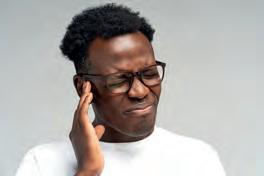
The guideline, updated from 10 years ago, includes 25 recommendations. Image: DimaBerlin/ stock.adobe.com.
• Therapeutic use of sound for tinnitus self-care; combined sound-based and behavioural interventions were associated with reductions in tinnitus effect compared with sound therapy alone.
• Cognitive behavioural therapy for tinnitus management to focus on improving thoughts, feelings, and behaviours associated with tinnitus.
• A multidisciplinary approach for evaluating and treating patients with bothersome
tinnitus and temporomandibular disorder, cervical spine dysfunction, or both. It said there was insufficient evidence to make a recommendation for or against neuromodulation or neurostimulation; acupuncture for tinnitus management; and neuromodulation or neurostimulation.
The guideline was against using ginkgo biloba, dietary or herbal supplements, or nutraceuticals; and anticonvulsants, antidepressants, antiemetics, antithrombotics, betahistine, intratympanic corticosteroid injections, or N-methyl D-aspartic acid receptor antagonists for tinnitus management.
“The full guideline offers patients and clinicians a comprehensive overview of evidence-based education and self-management, treatment options, and recommended outcome measures that could be used to monitor effectiveness and associations with other health outcomes with the overarching goal to improve patient health and well-being,” the researchers wrote. The strength of most evidence was weak, and many interventions lacked sufficient data for them to recommend either for or against, they said. More studies were needed including on web-based or app-based training and internet-based therapies .
Innovators in the national hearing care sector are being encouraged to become involved in the 2025 Endeavour Awards, which recognise achievement in Australan manufacturing.
The awards are presented by Manufacturers’ Monthly magazine and website published by Melbourne-based company Prime Creative Media. Prime Creative Media is a trade media and events company that also publishes Hearing Practitioner Australia.
The awards are the premier accolade in Australian manufacturing and, for the first time, the healthcare sector is involved. Winners will be announced on 13 November 2025.
Healthcare is among several new categories in the growing event. Others include the Outstanding Start-up, Innovation in Aerospace, Innovation in Food and Beverage Manufacturing, and Technology Application awards.
Organisers have introduced the Innovation in Healthcare Technology Award, which recognises “technologies that improve healthcare and medical manufacturing”.
“This category is for companies developing innovative health solutions, including medical devices, digital health platforms, biotechnologies, and pharmaceuticals,” Prime Creative Media Events general manager Ms Siobhan Rocks said.
All products and technologies must be manufactured and/or commercially available in Australia.
“Eligible technologies must have undergone advancements within two years before the nominations' closing date,” she said.
Other criteria include:
• How has the company foreseen and prepared for changing conditions and challenges in the healthcare industry and deployed innovative med-tech or pharmaceutical solutions to ensure the viability of the organisation? (20 points).
• Demonstrate how the innovation improves the industry in at least one of the following: environment and sustainability, productivity, efficiency and speed, cost-saving, safety. (30 points).
• What are the key issues/challenges/

The Endeavour Awards are the premier accolade in Australian manufacturing. Image: PCM.
opportunities that the project is seeking to solve and/or capture and what targets or KPIs have been met to date? (20 points).
• Has the project demonstrated new, replicable best practices for industry? (30 points). At last year’s awards, meat industry innovator MEQ was Australian Manufacturer of the Year for its work to revolutionise the industry through its “ability to provide relevant data solutions”. Nominations are open for the 2025 event. Submitting a nomination is free, and must be completed using the online form on the website by Thursday 2 October 2025. See endeavourawards.com.au/ nominations/.

Some wanted to quit due to the negative experiences. Image: New Africa/stock.adobe.com.

Peter Karlstromer, GN CEO, (left) and Dig Howitt, CEO and president of Cochlear signed the contract. Image: GN.
GN and Cochlear have expanded their 10-year research and development partnership within the Smart Hearing Alliance to enhance bimodal solutions.
The alliance delivers bimodal solutions connecting Cochlear Nucleus cochlear implants, wireless accessories, and GN’s ReSound hearing aids.
customers, they said.
All audiology students and interns surveyed in an Australian study said they had experienced negative acts during clinical placement, with nearly a third of those who answered questions about bullying claiming they were bullied.
The study was the first to investigate the incidence of negative acts and bullying of audiology students and interns in clinical settings.
“The emotional toll was substantial, manifesting in symptoms of depression, self-doubt, sleeplessness, and a substantial percentage expressed intentions to quit their clinical placement or the profession due to these negative experiences,” said study lead, Dr Bojana Šarkić, a senior lecturer in audiology at La Trobe University, Melbourne.
“Our findings highlight a critical gap: policies designed to protect and support students are either insufficient or poorly implemented. The psychological and professional repercussions for these future healthcare professionals cannot be underestimated.”
Disturbing behaviours included threats of violence, regularly being shouted at, experiencing excessive teasing, hostile reactions, offensive remarks, racial slurs, intimidation, sexual harassment, questions, advances and jokes, and being given hints to quit.
Results of the online survey of 52 respondents (70.6% who were interns and 29.4% who were students) were published in The International Journal of Work-Integrated Learning. Forty did placements in rehabilitative private practice, 27 in hospitals, 23 in diagnostic private practice, 12 in community health and four in other settings with overlap for doing several placements.
Of 43 who answered questions about bullying, nearly a third (12/43 or 27.9%) self-reported having experienced bullying on placement.
The study urged integrating audiometric hearing assessment into diagnostic evaluation in balance disorders. Image: Nazarii Karkhut/stock.adobe. com.
The alliance collaboration introduced bimodal control in the Nucleus Smart App to help patients quickly and easily manage their compatible ReSound hearing aid and Cochlear Sound Processor in the same app.
The companies said the enhanced collaboration aimed to further strengthen research and development across their organisations to deliver cutting-edge integrated hearing solutions for users of cochlear implants and hearing aids.
The agreement focuses on joint research and development efforts, technology sharing, and strengthening collaboration to bring products to
“The strengthened collaboration will improve future bimodal offerings from the two companies directly benefitting users to achieve even better connectivity not only between hearing devices but also to consumer technology, such as hand-held devices, phones, personal computers and more,” a joint statement said.
Cochlear and GN said they would work together to create innovative technologies, leveraging artificial intelligence (AI) and Deep Neural Networks (DNN) to support seamless integration between devices.
“This is built on GN's human approach to AI, which models the brain's natural sound processing capability to create voice clarity in complex listening environments,” they said. Mr Christoph Schmid, GN’s chief R&D officer, said: “Expanding this partnership allows us to innovate more than we otherwise could individually. This will benefit millions with hearing loss.”
Audiometric assessments can provide predictive insights into vestibular dysfunction which can assist diagnosis and management of balance disorders, according to French researchers.
They said their study “unequivocally demonstrates a clear correlation between audiometric phenotypes and vestibular deficits”.
Results also underscored the importance of integrating hearing assessment into the diagnostic

disorders, they added.
Writing in Scientific Reports on 21 April 2025, they said dizziness and vertigo were often linked to inner ear or neurological issues. The relationship between hearing loss and vertigo or vestibular deficits had been extensively debated in the scientific community, and the challenge lay in variability in inter- and intra-individual responses to standard vestibular examinations.
The study probed systematic audiometry and vestibular function in 1,115 patients attending consultations for tinnitus and vertigo at a clinic. Peripheral vestibular pathologies accounted for 49% of diagnoses, while 41% were attributed to central pathologies. Analysis identified six audiometric phenotypes correlated with vestibular test outcomes. Vestibular migraine accounted for 15%, bilateral vestibulopathy (16%), benign paroxysmal positional vertigo (9%), dementia (2%), Ménière’s (4%) and vestibular neuritis/ labyrinthitis (4%).

Have you renewed your Audiology Australia membership?








You must renew by 30 June to continue claiming HSP and other funding
Your up-to-date accreditation enables you to claim services through the Hearing Services Program (HSP), the NDIS, Medicare, private insurance and Worksafe/WorkCover.






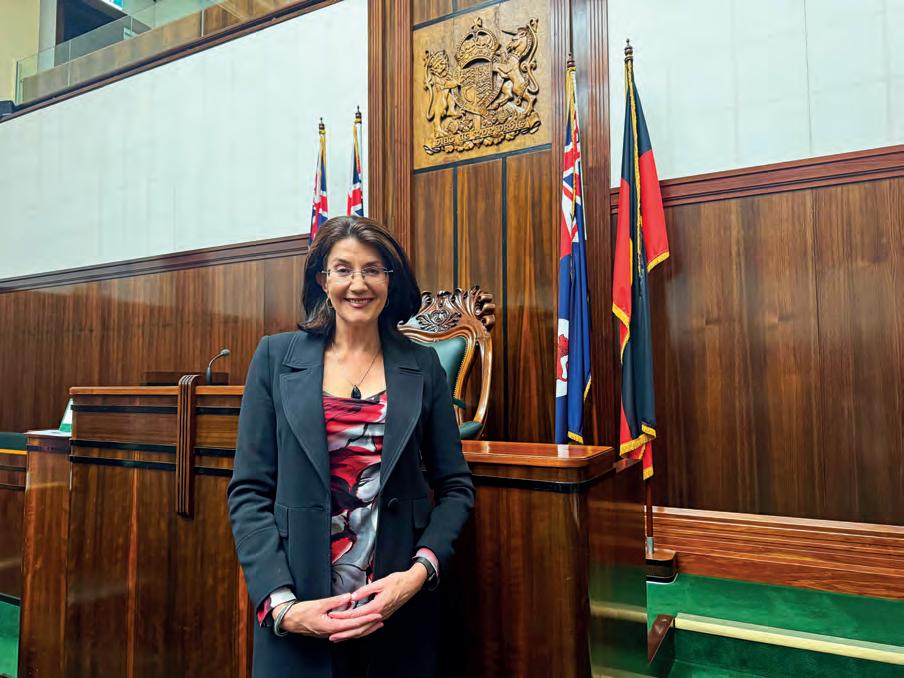
Awareness of bimodal options
Petrusma says the public is generally unaware that if a person has lost hearing in one ear, a cochlear implant in just one ear can make a big difference. “More awareness is needed on how hearing aids and cochlear implants can work well together and the advantages of being bimodal,” she says.
To help improve awareness, she gave the 2025 Libby Harricks Memorial Address in the Tasmanian Parliament on 22 March 2025.
“It’s a great honour to have the opportunity to continue Libby’s legacy of raising awareness and to help others,” she said at the time. “Like Libby Harricks, I now see it as my mission too, to influence policy in hearing health, and ensure that hearing health is a national priority.
“My lived experience has informed my professional journey and advocacy for greater accessibility and equality.”
Deafness Forum Australia with The Shepherd Centre arranged the address to honour the memory of the late Libby Harricks AM, Deafness Forum’s first president. It asked Petrusma to share her experience of losing her hearing later in life in a public role.
New Tasmanian Health Minister JACQUIE PETRUSMA MP is believed to be the first Australian politician with a cochlear implant. A hearing health advocate and role model, she is raising awareness of hearing loss, its treatment and prevention.
The Hon Jacquie Petrusma MP credits her “amazing audiologist and ENT surgeons”, plus a cochlear implant, with helping her to continue the job she loves as a Member of Parliament in Tasmania.
The mother of four and grandmother of four is inspirational on many levels and proof that hearing loss is no barrier to excelling in life and achieving for the community.
Petrusma, formerly a single mum of one, is a victim survivor of family and sexual violence, and a registered nurse. She's overcome crippling Menière’s disease and hearing loss to serve more than 13 years as an MP, seven years as a Minister, and become the Tasmanian Minister for Health, Minister for Aboriginal Affairs, and Minister for Veterans' Affairs in October 2024.
She’s proud to improve visibility of hearing loss, cochlear implants and hearing aids in Parliament and out in the community, to encourage young hearing-impaired people to believe that they too can achieve at a high level, and help older people and parents to overcome fear and misconception through being a strong advocate for cochlear implantation at any age.
After her Menière’s caused permanent hearing loss later in life, her bimodal hearing solution of a cochlear implant for one ear and a hearing aid for the other enable her to participate fully in life, including parliamentary debates. She tells HPA the worst of her tinnitus is over, thanks to the implant. “If I wear my implant all day, it decreases the tinnitus because sound goes straight into my cochlea which overrides the tinnitus. It also has a dampening effect on the tinnitus, with it being less noticeable overnight, resulting in far better sleep.”
Due to progressive hearing loss in her left, or better, ear, she was fitted in 2020 with a hearing aid, which is compatible with her implant. “The cochlear implant has been fantastic, and I've got a Resound hearing aid in my left ear. Being bimodal has made a huge difference especially in noisy situations and I can stream from my iPhone and TV,” she says. “In Parliament, if people are speaking from different areas, I adjust my iPhone so I can hear them, and in noisy environments I can quickly adjust my iWatch so I can hear people talking to me. The technology is fantastic.”
Ms Rae Walker, Deafness Forum Australia chair, said: “Our 26th address was a resounding success for hearing health advocacy. We are indebted to Jacquie for her tremendously moving address, and to Premier Jeremy Rockliff and parliamentarians who supported our event.
“It brought together the many very important stakeholders in our sector: service providers, government, NFP, and consumers, to network and build strength in their capacity to provide meaningful influence and lasting change that benefits the one in six Australians living with hearing loss.”
Petrusma also worked for The Shepherd Centre for several months, was Minister for Disability Services from 2014-2019, including during the rollout of the NDIS in Tasmania, and helped bring about improved services for deaf and hard of hearing young people, especially babies and children. She previously had the portfolios of Women and the Prevention of Family Violence and helped instigate three Action Plans to prevent family and sexual violence in Tasmania, alongside a substantial uplift in funding.
Her hearing loss journey started in 1999 when, working as a pharmaceutical company national sales manager, intense ringing, fullness in her ears and increasing deafness led her to a GP who she says misdiagnosed labyrinthitis.
“The ringing progressed to a constant high-pitched squeal, the fullness was intense, the computer went blurry and the room started tilting. I tried to stand but I fell over because of the intense dizziness and vertigo with the room spinning,” she says. “I had blurred vision and nystagmus, it was impossible to focus on anything, then I started vomiting and couldn't stop. It was the scariest day of my life as I couldn’t do anything to stop it; I thought I was dying.”
She says a specialist also misdiagnosed the condition as residual effects of labyrinthitis and told her to “toughen up”. She became too scared to drive because of the vertigo and quit her job.
Luckily, an ENT surgeon diagnosed Menière’s and prescribed medication and other therapies, which controlled the disease for several years. But in 2005, after the birth of her fourth child, it came back with a vengeance and her tinnitus was so loud and pervasive it badly impacted her sleep, concentration and work, and her hearing began to decrease.
In 2011, she finally acknowledged she needed hearing aids after prompting from family and friends, and because it was becoming harder to hear. She had also become an MP in 2010 and was finding it difficult to hear in noisy environments. But benefits of the hearing aid reduced over time especially in background noise due to fluctuating symptoms.

Tribute to practitioners
She then saw Hobart ENT surgeon Dr Nusa Naiman. “If it wasn’t for Dr Naiman, I would not have been able to work, lead a fulfilled life or be a Minister in the Tasmanian Government.
“She understood how hard it is to live with Menière’s and the impacts it has on you, your work, and your family. She was interested in researching new management options, and we tried different treatments.
“She also had the amazing Rohan Biddulph, consultant audiologist, working with her, and my family and I will forever be grateful to him and to her. Rohan persevered time and time again in fitting me with the right technology so I could continue to work as an MP and Minister, as I was experiencing dramatic fluctuations in my hearing.”
In 2016, the hearing in her right ear worsened to severe-to-profound, so she tried a BiCROS system which only helped when sitting beside or in front of someone.
“In 2017, Rohan and I discussed having a cochlear implant as I knew I had to have the implant or step down from being a Minister as it was getting too hard,” she says. “In question time, I was basically lipreading what Opposition members were asking me; other times, I was guessing based on what was in the media that day or asking a colleague near me to repeat the question.”
At Macquarie University Hospital on December 22, 2017 “the brilliant and incredible Clinical Professor Cathy Birman OAM” inserted Petrusma’s cochlear implant and did a myringoplasty to repair a hole in her eardrum from a chronic perforation that would not heal.
“By 3 January 2018, with an election coming, I was door knocking with now Deputy Premier Guy Barnett, who had to do all the talking and listening as I had no idea what was being said – I was just handing everyone a pamphlet whether they wanted one or not and nodding my head, as my implant had not been switched on yet,” she recalls.
Two days later was switch-on day.
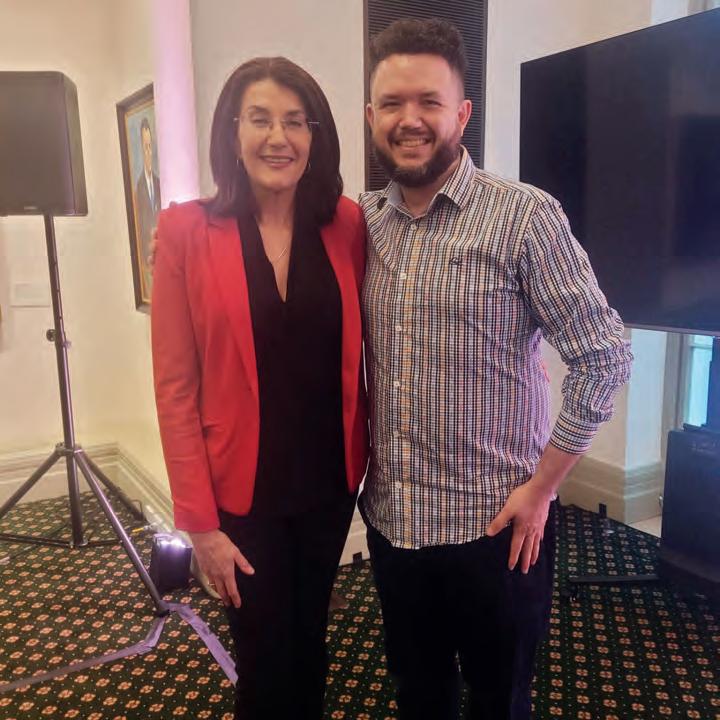
“Initially sound was garbled but due to Rohan’s magic and expertise, after a few more adjustments I was delighted that I could comprehend some speech,” she says.
After a week her tinnitus started to decrease, particularly when wearing the sound processor. But the battle wasn’t over as in 2019 she developed hyperacusis, constant ear infections and a perforated right ear.
Petrusma tells HPA: “Many people persevere with hearing aids like I did for a long time but you reach a tipping point. A hearing aid increases sound but can't over-ride the damaged nerve in the cochlea – only a cochlear implant can do that.”
For some, hearing aids stop working and the next step is an implant. They might put it off, fearing major surgery or that the implant will stop working.

“That’s not the case. A cochlear implant has been the best thing I ever could have done, and I wish I'd done it earlier, because seven years later, my hearing is improving all the time,” she says.
She advises seniors to have an implant as early as possible because if they haven't heard for a few years, they need to retrain the brain to listen to and understand words.
As she’s been public about her cochlear implant, people reach out.
“I’ve been to functions where women drag me over to their husband sitting alone in the corner, lonely, isolated, and not talking to anyone as they can’t hear, to convince them to have a cochlear implant that’s been recommended for them, but because they’re worried that it won’t work, they keep putting it off,” she says.
“I’ve met lots of people who put it off as they fear it’s major brain surgery. I reassure them it doesn't go straight into their brain but mimics the function of a healthy cochlea.
“I show them my sound processor, let them touch my head so they can feel the implant under my scalp and explain it’s attached to an electrode array in my inner ear, not my brain.”
Petrusma is saddened that 1.4 million Australian’s hearing conditions could have been prevented.
“Projections are that the number of Australians with hearing loss will rise to almost nine million by 2050, or one in four, up from one in six,” she says. “Unaddressed hearing loss poses an annual cost of $15 billion in Australia which is why we need individuals to protect their hearing, check their hearing regularly and use hearing devices if needed.”
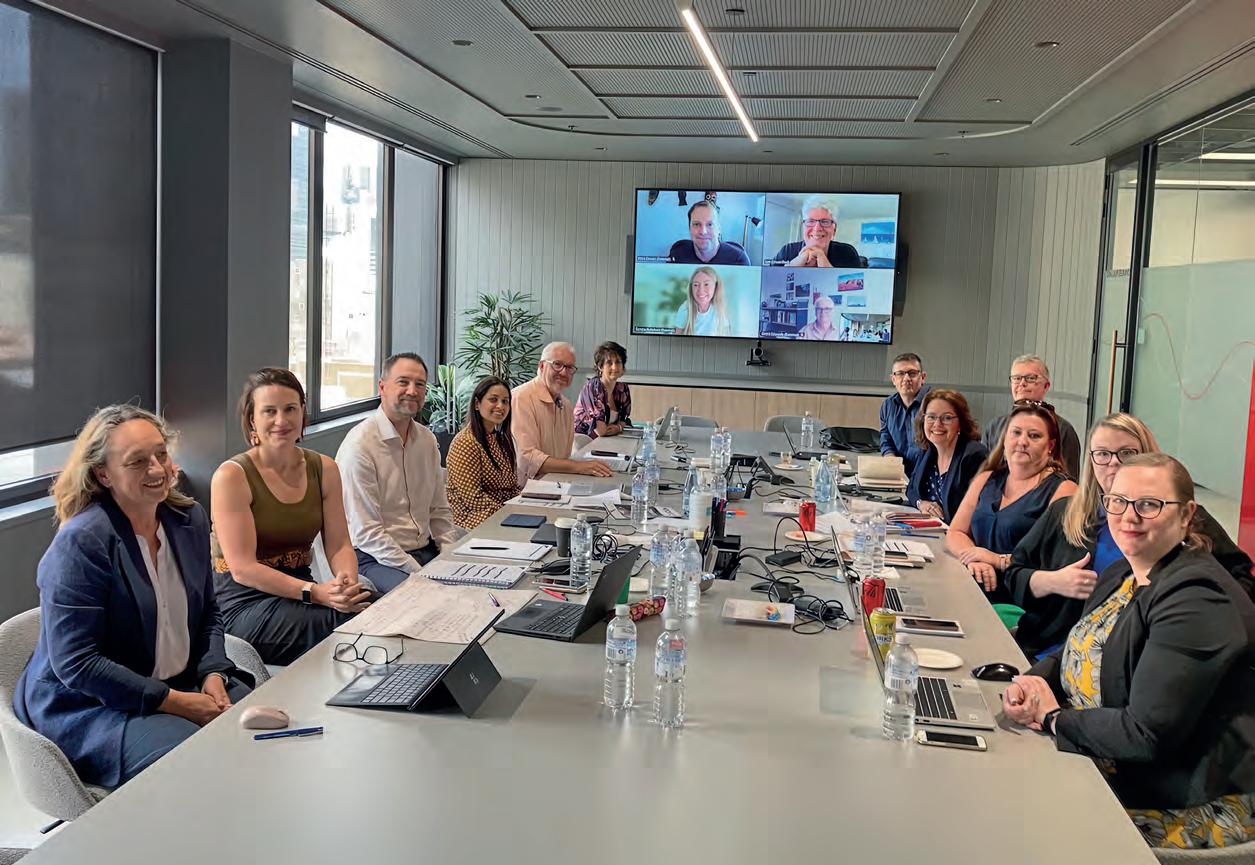
The Hearing Health Sector Alliance is a unique body, bringing together peak voices who leave their individual interests at the door to unite and improve access to hearing health support for all Australians. HPA profiles its achievements and priorities to date.
The Hearing Health Sector Alliance (HHSA) may not be something practitioners think about while tucked away in their clinic engaged in the bustle of daily practice life.
But it is worth thinking of – or at least knowing about – because while the industry’s clinicians are at work, this group of leaders from the nation’s hearing sector is regularly meeting, planning and advocating for practitioners and their patients. They’re fighting for, or protecting, the frameworks that prop up audiology practices across the country.
The alliance encompasses national representatives of consumer groups, health professionals, business/industry associations, educators and research organisations. And it’s exploring ways to expand membership.
“It’s a collaborative resource for governments and policymakers, offering unified expertise on hearing health matters across sectors,” says Ms Jane MacDonald, HHSA chair and CEO of Hearing Business Alliance. “It brings together key national voices in the hearing health ecosystem to improve equitable access to essential hearing health support for all Australians.”
The alliance works with governments to implement the Roadmap for Hearing Health, a framework to improve hearing health nationwide which outlines actions for governments and the sector to address.
The organisation elevates the priority of hearing health in the minds of policy makers. “We advocate to maximise access to the very best hearing health care within Australia and for better education of Australians about hearing health,” MacDonald adds.
Since its formation seven years ago, the alliance has offered a concentrated, single voice for the Federal Government to listen to, regularly meeting with Department of Health as well as Hearing Services Branch key personnel.
Signalling the importance of HHSA, in 2020 the Department of Health acknowledged the organisation as the main peak body for the sector.
Mr Chris Carlile, assistant secretary, Hearing Services Branch, Department of Health and Aged Care, said: “The department very much values the role that the HHSA plays in bringing together key stakeholders in hearing health.
“The diversity of expertise gathered together in the alliance remains an important consideration for the government in ensuring we fully understand the needs of the hearing health sector.”
The alliance has quarterly and interim meetings of its executive including MacDonald and vice-chair, AudA CEO Ms Leanne Emerson. Its focus is on aged care, Indigenous ear health, research priorities, and supporting vulnerable Australians.
In March 2025, the HHSA set its priorities for the 2025 Australian federal election, including extending the Hearing Services Program (HSP) to those on low incomes, mandating hearing screening within one month of admission to aged care, and creating a new HSP Schedule item for aged care screening.
Other priorities focus on improving Aboriginal and Torres Strait Islander hearing health and addressing regional and remote workforce shortages. It sent the priorities to all ministers and shadow ministers whose portfolios included health, social services, Indigenous health and aged care.
Its recommendation to extend the HSP is to support low-income and unemployed individuals with hearing loss greater than 26 dB in the better ear. “This initiative would increase employment opportunities, estimated to yield $311 million in productivity gains, while improving the budget position by $33,135 for each individual who gains employment, ultimately generating a net fiscal benefit of over $268 million,” the priorities statement says.
“With approximately 15,000 individuals excluded from the National Disability Insurance Scheme (NDIS) due to strict hearing loss eligibility
thresholds, this group faces significant barriers to wellbeing, social inclusion, and employment.”
The HHSA believes two key initiatives the government could implement would make a huge difference to older Australians in aged care settings.
The first is mandating a uniform protocol to conduct hearing screening for all new residents of aged care facilities within one month of residency in the facility and include this as a quality metric in aged care reporting.
The second is creating a new schedule item in the HSP Schedule for aged care facility hearing screenings at the same price as a hearing assessment ($157.40), reflecting the true cost for hearing health care professionals to conduct remote visits and diagnostic services.
“There is no standardised approach to managing hearing loss in aged care, leaving many residents unsupported and creating communication challenges between residents and staff,” the statement says.
To address regional and remote workforce shortages, HHSA recommends reducing HECS debts for domestically trained hearing health professionals by 10% for each year they live and work in designated regional or remote areas.
“With only around 250 new domestic graduates each year, this measure would attract more professionals to areas where they're most needed,” it says.
It urges improving the Skilled Employer Sponsored Regional (provisional) visa for hearing health professionals, including lowering application fees, adjusting residency requirements, and increasing the age limit to attract skilled international professionals to regional areas.
People experience hearing loss at higher rates in rural and remote areas yet hearing health professionals are concentrated in urban centres, it says. This exacerbates barriers to care in underserved regions and thin markets.
It says the government has a unique, once-in-a-generation opportunity to enact meaningful improvements in Aboriginal and Torres Strait Islander hearing. Recommendations include reviewing Hearing Australia’s outreach targets for Aboriginal and Torres Strait Islander children and hold contracted service providers to account regarding resource allocation relative to achievement of agreed targets.
A second priority is refining funding mechanisms in the Community Service Obligations program to make it focussed on and responsive to local community needs. A third is mandating ear and hearing health professionals to move away from a standard approach of service delivery and embed cultural safety at an individual and system level.
The HHSA is an unincorporated association, independent of government and political parties and doesn't receive funding from the private sector. It's been involved in advocacy and support of a wide range of issues including supporting Audiology Australia (AudA)’s Teleaudiology Guidelines and Paediatric Competency Standards, and a white paper on the rural and regional workforce.
It's put in submissions to the Royal Commission into Aged Care Quality and Safety, the Australian Competition and Consumer Commission on hearing aid button battery safety, and a pre-Budget submission to the HSP Review on vulnerable Australians.
Other key priorities include the Roadmap for Hearing Health, and a HHSA Action Plan 2023-2025.
At a meeting in Melbourne in March 2025, the alliance refined position statements and advanced action plans for priority areas. They are to:
• Advocate for the very best hearing health care and support for all people who experience hearing difficulty.
• Close the gap in ear and hearing health for Aboriginal and/or Torres Strait Islander people.
• Increase support for aged, vulnerable, disadvantaged people and communities.
• Significantly improve the rural and regional hearing health care workforce.
• Enhance and focus nationally funded research to achieve targeted impact.

The alliance evolved after the 2016 Parliamentary Inquiry into Hearing Health and Wellbeing of Australia. In 2017, the ACCC investigated issues around hearing aid sales, and in 2018 the Australian Government responded to the Inquiry: ‘Still Waiting to be Heard’.
This led to then-Minister for Senior Australians and Aged Care, Mr Ken Wyatt, establishing a Hearing Health Sector Committee in 2018 to develop the roadmap. A roadmap committee formed, representing 16 organisations, with independent chair, Mr David Tune AO PSM. It had four meetings between July 2018 and January 2019, with additional sector consultation, which included two stakeholder forums in September 2018 and February 2019.
The Roadmap for Hearing Health was released in February 2019, and endorsed by the Council of Australian Governments (COAG) on 8 March 2019. In February 2019, then-Audiology Australia CEO, Dr Tony Coles, wrote to eight organisations, inviting them to meet to form an alliance.
The HHSA was modelled on the National Aged Care Alliance and officially launched on 2 September 2019. The HHSA has since expanded to include 15 member bodies. It has narrowed down roadmap recommendations from 140 to five priorities.
“We continue to hold governments to account to ensure all Australians who are Deaf or hard of hearing can live well in the community and access vital education, services and technology,” MacDonald says.
• Audiology Australia
• Au stralian College of Audiology incorporating Hearing Aid Audiology Society of Australia
• Au stralian Society of Otolaryngologists, Head & Neck Surgeons
• E ar Science Institute Australia
• F irst Voice
• H earing Aid Manufacturers and Distributors of Australia
• H earing Business Alliance
• H earing Care Industry Association
• I ndigenous Allied Health Australia
• M acquarie University
• N ational Acoustic Laboratories
• S oundfair
• S peech Pathology Australia
• U ni versity of Melbourne
• U niversity of Queensland
When a patient leaves a practice satisfied with their service and the hearing aid solution, everyone wins. Three audiologists give their take on ethics in audiology and how they balance patient needs with the demands of running a sustainable private practice.
OIt sounds simple enough but with increasing pressures on business owners, it could be easy for hearing practitioners to focus on sales and appointment targets and become device-centric, while losing sight of the needs of the patient sitting before them.
Independent audiologists Mr Sam Koroneos, Dr Meg Miklosvary and Dr Matthew Callaway haven’t been immune to these pressures, but for them it’s no reason to compromise on the values that underpin their successful independent audiology practices.
They describe what it takes to ensure patients leave satisfied and comfortable with the value of their service, regardless of receiving a hearing device.
Koroneos, the owner of Adelaide Audiology who counts two ex-prime ministers among his patients, is this year celebrating his 40th year of practice, having graduated from audiology at The University of Melbourne when cochlear implant pioneer Professor Graeme Clark AC was head of school.
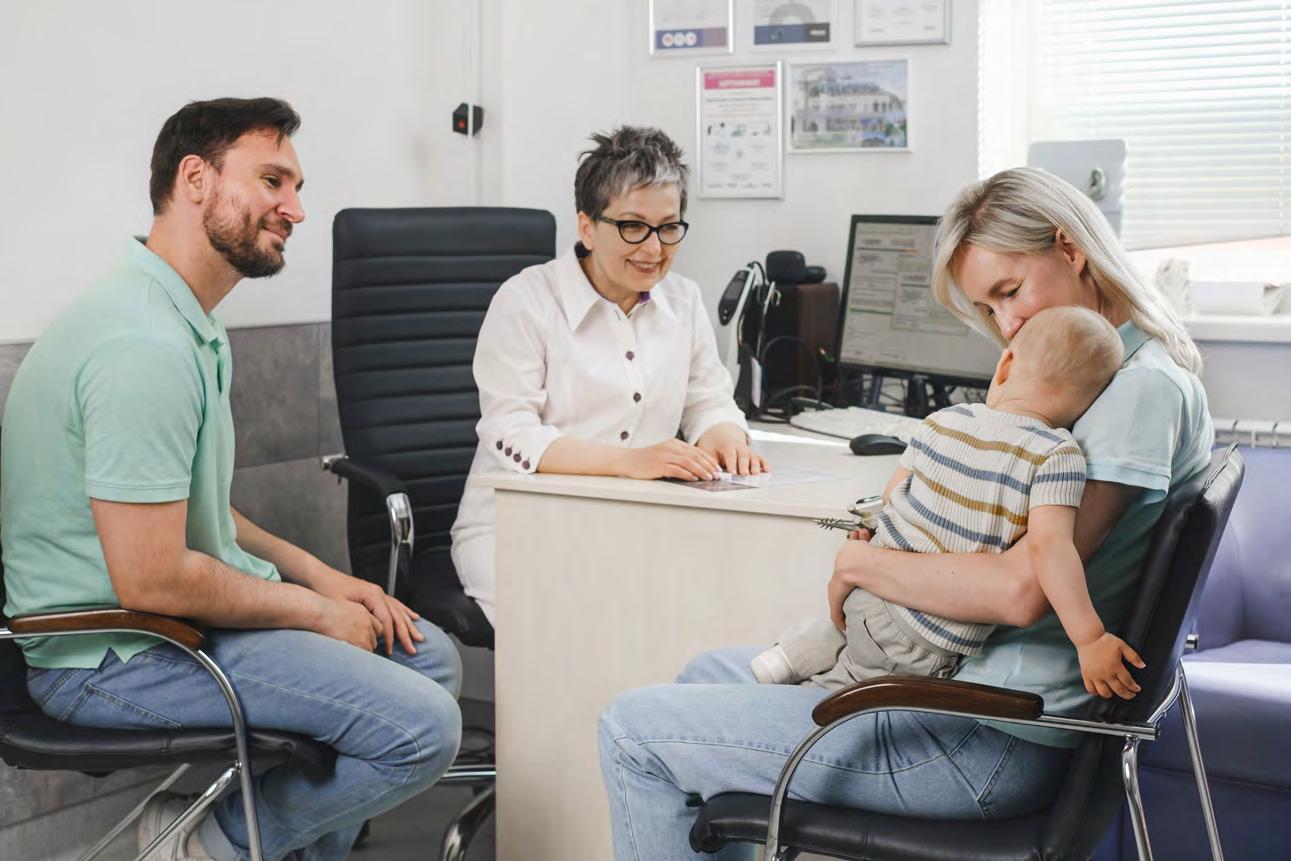
"We also work closely with an ENT practice.”
Koroneos knows from many years’ experience and helping thousands of people that the relationship with a patient is longitudinal, due to ongoing rehabilitation and care over what is sometimes a lifetime and often decades.
Service and that trusting relationship – accumulated over many years and interactions – is what keeps patients coming back, not any particular hearing aid, he adds.
“One loyal patient drives seven hours to see me and tells people he’s on his third wife, but he’s still on his first audiologist,” he says.
“Ethical-driven practice is the answer. Whether patients are lower or higher socio-economic status, there will always be people who are discerning enough to realise they need service attached.
“People who are interested in a service recognise that it's not just about buying the hardware, there’s a longitudinal process involved which is when you get to cultivate relationships with the patient, and in future, the rest of the family comes in. I just love it and feel privileged to have that relationship.”
Koroneos even has several third-generation patients whose parents and grandparents he treated.
“We’re independent, unbiased and not affiliated with any hearing aid provider. This is on our website and we have lots of people say that’s why they chose us,” he says.
Koroneos honed his skills and practise while working in different fields of audiology including at Royal Adelaide Hospital for 13 years and teaching at Flinders University where he helped write the audiology course. “I recently saw former students at the Audiology Australia conference and got such a buzz from hearing them say I had the biggest influence on how they wanted to be as an audiologist,” he says.
He also worked for National Hearing Care, now Amplifon, before opening his practice 25 years ago, while lecturing part-time.
“We do no advertising, it’s nearly all word-of-mouth, although we do have some walk-ins, and we have GPs and ENT doctors who trust us implicitly and refer their patients to us," he says.
Koroneos and fellow audiologist Ms Laura Drexler, who also works at the practice and specialises in tinnitus and hyperacusis, know patients referred from doctors have had their ear pathology checked before seeing them.
He believes that before fitting hearing aids, patients should see a doctor to check there are no middle ear issues, conductive issues or asymmetric sensorineural hearing loss, which “could be something nasty like acoustic neuroma”.
“Our patients have seen a doctor to ensure all active pathologies are excluded and when they come to us, they’ve done their due diligence through the medical system and don’t need convincing that they need a hearing aid because they’re ready to take constructive action,” he says.
“That's what I consider ethical. We're not forcing anything down anyone's throat.”
Adelaide Audiology bundles products and care so patients “get a year of us thrown in” along with three years’ warranty from the manufacturer – although some are up to five years. Ethical practice also leads to other organisations trusting the practice and referrals.
“We do a lot of musicians’ earplugs and in-ear monitors,” Koroneos says. “Addicted to Audio in Adelaide sends its musos here. We also do earplugs for pilots referred from the Civil Aviation Safety Authority, and South Australian-based umpires for the AFL as those whistles are loud, and we treat veterans.”
In some cases, the clinic re-purposes hearing aids, donated from families whose relative has died, to clients in need.
“We keep a list of who has donated hearing aids back to us and who we think might need them,” he says. “We give these to patients in need for free.”
A recent hearing aid had been paid for and barely worn when the owner died and his wife passed it back. The practice donated it to a young patient who had developed hearing loss in one ear and tinnitus after surgery as a side-effect of anaesthesia.
“I rang her and asked if she was interested. I said we could supply this to her at no cost, because it had already been paid for and had three years’


warranty. She burst into tears,” he said.
As karma would have it, he ran into her while doing consultancy work. She was overjoyed and had told everyone at her workplace what a great and ethical business he had.
Being generous with appointment time is also key as is lending demonstration models to new patients to try, Koroneos adds.
Treat the complaint and get results
Northern Territory audiologist Dr Matthew Callaway, an alumni colleague of Koroneos, agrees that if practitioners do the right thing by the patient, the rest will take care of itself.
“Our practice is all about getting results first. I'm very specific with our audiologists, if they can treat the presenting complaint of the patient, empathetically and correctly, clinical ethics will be integral to that,” he says.
“We're health professionals first and our audiologists are all of the same philosophy. We treat the presenting condition, manage the issues, and whether that's devices or other forms of treatment, they'll choose the best pathway for that.
“No clinicians at our clinics are paid commission or incentives but they make decisions based on what is going to work best for the person in front of them.”
Dr Callaway draws from years of experience working in hospitals in Adelaide and Darwin, for Bernafon in research and development in Switzerland, and in his own practice in the NT since opening it in 1998.
His business, Arafura Audiology, has four clinics – three in Darwin and Alice Audiology in Alice Springs – and with 11 staff members, serves areas reaching to Katherine and Gove Peninsula in Arnhem Land.
The question of how to balance patient needs alongside running a sustainable private practice is a big one, Dr Callaway says.
“People still occasionally come in and say, ‘You’re just going to sell me a hearing aid, aren't you?’” he adds. “I respectfully inform them that they’re here because they have a hearing problem that they need treated and if they want to just be sold a hearing aid, they can go elsewhere. I’ve never had anyone walk out.”
His audiologists are motivated to get the best outcomes for their patients, Dr Callaway says. “We discuss regularly as a group, what's necessary for the client may not be what's best for you.”
He feels there’s too much value placed on devices though.
“The audiologist, for a long time, has been undervalued in this process, and we became very device centric. We're starting to see, including with


have a discussion and evaluation before broaching what treatment might be.
“There are no glossy ads around hearing aids,” he says. “It's more about a professional opinion based on diagnosis and findings, then we'll discuss whether a device or an instrument is indicated, or whether other means of treatment may be equally appropriate such as assistive listening devices or communication tactics.”
If it’s a hearing instrument, the patient returns for another hour-long appointment where the audiologist details their specific listening needs and expected outcomes.
“We make a combined decision on what's going to work from their point of view and what clinically we see as the optimal match for their treatment requirements and listening needs,” he says.
One part is considering their budget, even more so now. “We’re seeing a lot of people who, four or five years ago, would just say you're the expert, fit me with what you think is going to work best and what I need,” Dr Callaway says. “Now, they’re asking about other options that may require lesser financial investment.”
Patients, who are mainly middle class, come in having done research. “We make a clinical decision on what they're going to have in conjunction with a rehabilitation program so their expectations are clear including for follow-up.
“If people are invested in their clinical care, they're more invested in wearing their hearing aids regularly and successfully, as opposed to a free clinical trial. Trials are infrequent in our clinic, instead clinical pathways decide.”
The practice has a relationship with clinical specialists at all major manufacturers. It uses some more than others, usually depending on technology, and all clinicians are expected to stay abreast of releases and developments.
Most manufacturers visit them at least annually and practitioners receive


online updates. Distance to metropolitan launch events is challenging but Zoom, online launches and webinars help greatly with keeping up on latest technology.
Some manufacturers do some things better than others, and some don’t offer particular products, such as CROS hearing aids. “We need to have that scope across manufacturers to ensure we cover all opportunities and options for our patients because everyone’s hearing is different,” Dr Callaway says.
The front office team is also vital in ensuring ethical practices are followed. “Our front office teams are versed in support areas and rehabilitation programs,” he says.
“There's at least three follow-ups once we fit devices to make sure a client is optimised via objective testing and subjective reports. After that, they're welcome to come back any time for battery replacement, servicing, repair, and Bluetooth troubleshooting, which is a huge part of what we do nowadays.
“In some respects, we joke that we’re as much IT professionals as we are hearing professionals today.”
The recall system ensures all hearing aid users, whether HSP or private patients, receive a reminder to come in and check their hearing and their hearing aids. An annual discussion includes if they are still meeting key listening goals.
Patients know they can come in anytime to discuss any issues with the front-of-house teams and see an audiologist if they need, Dr Callaway adds.
The practice also has many tinnitus patients and clients with noise-induced hearing loss, due to a big local presence of defence forces and veterans.
Three front-of-house staff members have external training in hearing health care and are qualified audiometric officers so understand ear anatomy, hearing tests and implications of hearing loss. This understanding and empathy for patients contributes greatly to practice ethics, Dr Callaway says.
His clientele usually don't walk in off the street but make an appointment, are referred by a medical practitioner, a specialist, an important other or word of mouth.
Dr Callaway believes in charging fees for service. “This is how we started our clinic. We were looked at strangely 27 years ago, but we place value on our expertise. Audiologists train for six years before they can get Medicare and QP (Qualified Practitioner) numbers to practise,” he says.
“We've always unbundled services so people are aware that they're paying to see a clinical specialist. The hearing aid is worth so much but my expertise is also worth so much. One way we remain profitable is that there's no such thing as a free hearing test – you're having a diagnostic expert evaluation.
“We have never had people baulk at our professional fees.
“I am a strong advocate that your clinical expertise is valuable – put more weight on your expertise. Put more value on the clinician rather than all the value on the product,” he says.
To ensure all staff are aware of their value, the practice presents its monthly profit and loss summary to the team.
“There's no push on anyone to fit more hearing aids,” he stresses. “It’s about treating the patient but it's for them (audiologists and client services officers) to be aware of what their expertise is worth and how many dollars an hour our clinics need to make to open the doors and cover costs of sustaining the business.
“The audiologists need to be rewarded for their expertise and paid fairly without having incentives put in front of them.”
A former intern at Dr Callaway’s Darwin practice, audiologist Dr Bojana Šarkić – then Discipline Lead and audiology course coordinator at La Trobe University – approached him a few years ago with the idea of a business and ethics subject for the university's Master of Clinical Audiology program. Her vision was for students to learn how to set up and run a practice, understand business fundamentals, and most importantly, deliver ethical, patient-centred care. She says she approached Dr Callaway specifically because his Darwin clinic exemplified those values in action.
“She said students needed to understand what running a practice really involves – from KPIs and patient loads to why certain clinical and commercial decisions are made,” Dr Callaway says. “Bojana wanted them to see that it’s possible to run a successful business without compromising patient care, and that ethical practice should be the foundation—not the exception.”
Dr Šarkić, alongside fellow lecturer Ms Michele Le, remains committed to preparing students for the realities of independent and corporate audiology environments through a strong foundation in ethics and practical business knowledge.
In Gippsland, Helix Hearing has grown from one clinic 35 years ago, to seven across Gippsland, two in Melbourne and one in Tasmania. Dr Meg Miklosvary, audiologist and clinical director, took over the practice 10 years ago with her husband Andrew.
They brought Gippsland Audiology (as it was then known) from audiologists, founder Mrs Sue Clutterbuck and her husband Mr Neil Clutterbuck. “When opening the practice, the environment for private practice was very different from what it is now,” Dr Miklosvary says.
“It was considered unethical to even contemplate ‘selling’ hearing aids outside the government services, no matter how it was done. Sue opened the clinic as an independent provider, meaning all solutions were available to patients at a sustainable price. No free services were offered.”
Dr Miklosvary says everyone knows there’s no such thing as a free lunch and believes the same applies in audiology. “If you’re providing ‘free’ services, someone is paying for the time and resources somewhere along the way. The same philosophy continues today,” she says.
Helix Hearing remains independent and patients pay for all services received except for in-house cleans provided by the front-of-house team. Having a stable workforce in the clinic helps build loyalty not only within the team but with patients, she adds.
“Patients want the option of coming back to see the same clinician year in, year out and at Helix Hearing we’ve been fortunate to retain many excellent team members – clinicians and front-of-house staff,” she says.
“Despite change in ownership, and a name change to Helix Hearing 18 months ago, patients continue to remain loyal to the clinic as they can see the same ethics and values continue.
“We have standards for how we want to offer our services and we stick to them. Sometimes this is not the most cost-effective but it ensures our

Image: Matthew Calllaway.
“We discuss regularly as a group, what's necessary for the client may not be what's best for you.”

standard of care to our patients does not slip.”
It also means team members are not put in positions where they feel compromised in how they can practise. However, growing the business comes with the benefit of economies of scale which helps to buffer the cost as additional sites open or are acquired.
For Dr Miklosvary, ethical provision of hearing aids comes down to seeing each patient as an individual and assessing their needs solely based on what’s best for them. The business offers all solutions to patients, as not one hearing aid manufacturer will suit everyone, plus a range of technology levels and budget requirements.
“Finding the most appropriate device for an individual is important, the ‘best’ hearing aid, i.e. top-level technology, may not be the best hearing aid for a particular patient,” Dr Miklosvary says.
“We don’t have sales targets, nor pay commission, for any hearing aids sold or limit consulting time as these pressures cause bias and mean the clinician is not acting in the absolute best interest of the patient.”
Dr Miklosvary believes that unbundling the cost of services from hearing aid pricing has been a huge step to validating the value of audiologists’ time and expertise. Patients understand the cost of appointments and value the time spent in clinic, she says.
“When this is bundled with a hearing aid cost, patients do not see the value at the time of fitting, and often not down the track when they require ongoing care,” she adds. “It also provides patients with potential to claim rebates from their private health fund or Medicare when appointments are charged per attendance.”
Front-of-house team members are trained in basic repairs, cleaning and connectivity troubleshooting which patients appreciate being available five days a week.
Dr Matthew Callaway
Arafura
Audiology
Patients receive all information they require to use and maintain their hearing aids in initial appointments after fitting. Once benefit is established, they’re advised to make additional appointments, are followed up with a phone call eight weeks post-fitting to ensure everything is progressing well with their rehabilitation, and a survey is sent six months post-fitting.
Starkey senior research audiologist Dr JUSTIN BURWINKEL explains the “why, how and what” behind the world-first Balance Assessment Tool in the company’s groundbreaking new Edge AI hearing aids.
After Starkey embedded world-first technology in its Livio AI and Genesis AI hearing aids to alert the wearer’s emergency contacts if they fall, the logical next step was to go further and add falls prevention measures into its upcoming release.
The leading hearing aid manufacturer has done just that with its revolutionary Balance Assessment Tool featured in all three tiers of its new Edge AI hearing aids. Sensors integrated into the devices and connected via the My Starkey app on the patient’s phone enable fall detection, assessment and prevention features.
The app provides self-guided balance screening and exercises to identify if a person has an elevated falls risk. Users receive voice instructions and diagrams on their phone screen and the sensors obtain accurate recordings and scoring of the balance tests they complete.



The tool is also beneficial for audiologists as it helps fulfil their scope of practice into falls prevention, says Dr Justin Burwinkel, senior research audiologist at Starkey, and one of the clever minds behind the new feature.
“When our medical colleagues see we’re providing more than hearing aids and we’re going the extra step and addressing wellness proactively, that reflects well on us individually and as a profession, garners goodwill in our communities and fosters referrals,” he adds.
Adding this feature into hearing aid technology makes sense given that falls are a major cause of morbidity and mortality in Australia, leading to more than 238,000 hospitalisations and over 6,300 deaths a year, according to the Australian Institute of Health and Welfare.
They cost our health system $4.7 billion annually and are the leading cause of hospitalisation due to injury with most occurring in people aged over 65 due to slips, trips and stumbles.
The link between hearing loss and increased falls risk is well established, says Dr Burwinkel.
“Even with mild hearing loss, people are three times more likely to have a history of falling than those without hearing loss, and the risk increases as hearing impairment worsens,” he says. “Published data from Johns Hopkins University shows a 40% increased incidence of falls for every 10 decibels of measured hearing loss, and this was for people aged in their 40s, 50s and 60s.”
Dr Burwinkel says community-dwelling audiology patients have been found to fall significantly more often than age-matched peers who have not sought audiologic assessment or care.
Research has also found that as hearing loss increases, people spend more time being sedentary, and adults over 60 spend 80% of their time sitting. This is a falls risk factor due to impacts on muscle function and mobility.
“The amount of physical activity a person achieves in their 60s and 70s is correlated with their rate of falling in their 90s,” he says. “If audiologists can
help keep their patients more socially and physically active earlier in life, that can potentially pay dividends in reduced falls risk later. This is encouraging and speaks to how audiologists can have a lasting impact throughout the lifespan.”
Other studies have indicated that about half of people over 65 hospitalised after a fall die within a year, he adds. “Technically, we can’t say the Balance Assessment Tool is lifesaving, but I have the personal satisfaction of knowing that we’re helping support the key pillars of falls risk management.
“Around 2016 we created a falls risk management feature development program, where we prioritised features that we would develop and deliver to market. The first – called ‘Fall Alert’ – is a feature that automatically detects when a patient falls, and texts caregivers or whoever is identified as a confirmed contact, to let them know the person has fallen.
“But from the beginning, we wanted to help prevent falls and amplify the audiologist’s ability to do that. An ounce of prevention is worth a pound of cure.”
Dr Burwinkel says there are known barriers to addressing falls globally.
“For audiologists, we saw tools like this as being a way to help lift that burden,” he adds.
His team knew Starkey had a strategic goal to develop hearing aids to include Inertial Measurement Unit sensors – accelerometers and gyroscopes – which measure linear acceleration and angular velocity (rotation) respectively.
At that time, Fitbits were providing feedback and step counting but Dr Burwinkel and his team were most interested in features that would specifically match the expertise of a hearing healthcare professional and could help their audiologist customers serve their patients better.
“I thought something related to balance would do that because hearing and balance are a natural fit for audiologists, even though some might focus on one over the other. I wanted to bring it back to where any audiologist could confidently say they provide some level of balance care,” he says.
“Whether vestibular specialists or not, they can help address their patients’ concerns with balance, and if it’s beyond what they’re comfortable with, they
can refer, but this way they can at least feel equipped to practise at the height of their scope of practice.”
Being a flexible tool, staff in aged care facilities, for example, can also use it, he adds.
The US Centers for Disease Control and Prevention’s STEADI (Stopping Elderly Accidents, Deaths & Injuries) falls prevention initiative took recommendations from American and British geriatric societies for fall prevention and turned them into a digestible, efficient toolkit for clinicians and patients.
“We made an electronic form of this framework that leveraged sensors in the hearing aids to provide feedback on a person’s balance and falls risk,” Dr Burwinkel says.
“By integrating advanced sensor technology, artificial intelligence, and the core principles of the CDC’s STEADI initiative, it provides clinicians with a reliable tool to support proactive falls risk management during and between office visits.”
A patient wearing Edge AI can do the assessment and exercises at home with a relative. The system can also help train audiology students or clinicians not accustomed to falls prevention assessments to deliver an evidence-based assessment, knowing the patient will receive accurate results in a safe way, he says.
A significant barrier to audiologists participating in falls prevention is lack of formalised training and standards of care but falls risk management is within our scope of practice, he adds.
“One of my favourite presentations was called, “What does falls risk screening even look like? I’m asking for a friend…” because it’s true – that we keep hearing it’s within our scope – but we don’t know exactly what it should look like in practice, which can be intimidating, when actually, it’s easy,” Dr Burwinkel adds.
A geriatrician who helped develop the STEADI initiative said when people have annual health checks, they’re lucky to have a falls risk screening, and many miss out altogether.
“She was excited that our technology would be getting these snapshots in time more frequently, which can help a patient detect a change in status and prompt them to see a physiotherapist or occupational therapist, for example, and modify their risk factors,” Dr Burwinkel says.
Both falls features can be a selling point for Edge AI; if relatives and patients are concerned about falls, these might help them stay in their own home and avoid aged care.
Patients answer a 12-item screening questionnaire in the My Starkey app on their phone. It’s based on the STEADI initiative and lists modifiable risk factors, identifies if they’re at risk and details actions that can be taken to prevent falls.
Even if no concerns are found, Dr Burwinkel says it creates awareness that may empower users to detect changes in their risks earlier in the future, enabling them to react quickly to new or worsening concerns.
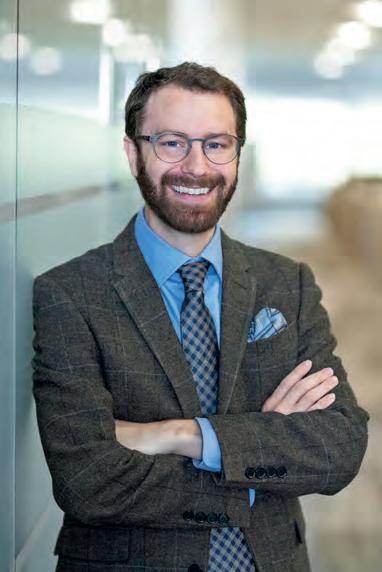
“From the beginning, we wanted to help prevent falls and amplify the audiologist’s ability to do that. An ounce of prevention is worth a pound of cure.”
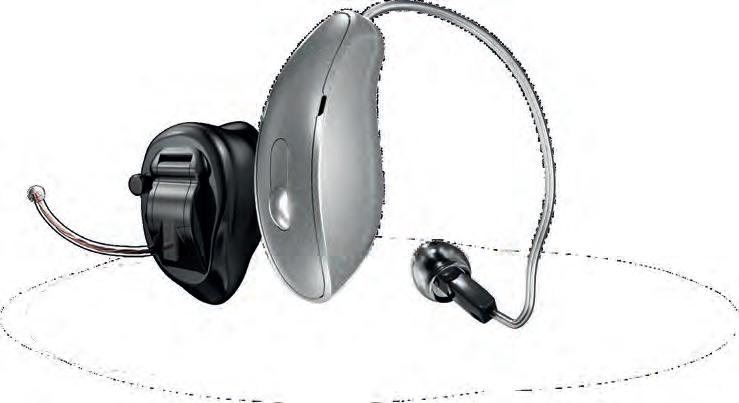
All three tiers of Starkey’s Edge AI hearing aids contain the Balance Assessment Tool and Fall Alert technology.
Dr Justin Burwinkel Starkey

Post-screening, the patient is guided through structured assessments of gait, strength and balance.
They walk for 12 seconds which assesses coordinated movement and speed, perform sit and stand exercises from a chair for 30 seconds, and balance for 10 seconds in each of four different standing poses.
“It gives the patient instructions so once they learn it, they can breeze through it. The exercises are functional, evidence-based and well documented in the literature; including the Timed Up and Go (TUG) walk test, chair stands, and the Four-Stage Balance Test,” Dr Burwinkel says.
“The feature utilises sensors in the hearing aids to understand how the patient is moving through the tests to provide a score that independent research studies at Stanford Medicine have shown are as accurate as clinician observation.”
Other studies by Stanford and Starkey show it doesn’t matter whether the person does the exercises without direct clinician observation, or receives a demonstration with their audiologist first, as both groups did the exercises properly and it was safe to use unsupervised in their home.
“Obviously it’s better if a clinician demonstrates and helps them understand first, especially if the client is technology averse, but we developed it so it’s easy to follow, effective and safe. If clinicians are strapped for time, they can feel secure knowing their patients can do this independently at home,” Dr Burwinkel says.
The app does, however, suggest that having someone present at home is advisable. Routine use – perhaps monthly – is a good idea to regularly check balance, he adds, and once a person is familiar with the exercises, they only take five minutes to assess again.
“Regular self-assessment empowers individuals to maintain greater awareness of their balance health and address modifiable risk factors before they escalate, potentially leading to improved patient outcomes and reduced fall-related injuries,” he adds.
For more information, see Dr Burwinkel’s endorsed webinar on the Balance Assessment Tool, a white paper on the tool’s development and validation, and studies at starkeylearninghub.com.au. The STEADI toolkit and resources are available at cdc.gov/steadi.
WS Audiology’s RealTime Conversation Enhancement feature is a breakthrough technology unique to its latest Signia hearing aids. For the first time globally, the company says multi-stream architecture is enabling wearers to focus on and hear more than one person talking in a noisy situation.
Three beams enhance multiple speakers
While other hearing aids process incoming speech using single stream technology, Mckinnon says the multi-stream Signia architecture uses RTCE with multiple beams that identify, enhance and track multiple speakers.
“What's unique about Signia, and this is unique in the market, is that it produces three beams to identify and focus on individual speakers, enhancing speech understanding in group settings,” he says.

Hearing conversations while surrounded by background noise is the problem that people with hearing loss – whether they wear a hearing aid or not – struggle with the most.
Multiple studies and surveys have confirmed this – and hearing aids that can deliver a clear conversational experience while minimising ambient noise are considered the holy grail for patients and practitioners.
WS Audiology (WSA) says a “groundbreaking innovation” developed for its Signia hearing aid range addresses this complaint. But it goes further than competitor technology by enabling wearers to clearly hear multiple speakers, even in noisy environments, WSA adds.
About 12 months ago, WSA introduced Signia’s Integrated Xperience (IX) Platform. The platform is said to deliver world-class performance in noisy environments through four IX models via its flagship technology, RealTime Conversation Enhancement (RTCE).
Audiologist Mr Peter Mckinnon, head of commercial acceleration for WS Audiology ANZ, says RTCE follows and focuses on multiple voices in a group conversation, while reducing background noise to a comfortable level, enabling wearers to follow and contribute to group conversations.
“Based on multi-stream architecture, it represents a significant advancement in hearing aid functionality, specifically designed to improve speech understanding in noisy group settings,” he says.
WSA cites one study which found the technology offers a 24% improvement in speech understanding in noise compared to a leading competitor device with an AI co-processor. It also found 86% of participants performed better with Signia IX. “Consumer research indicates group conversations in noisy environments are the most challenging for people with hearing loss and hearing aid users,” Mckinnon says. “Listening in a group conversation is complex and dynamic, people are having conversations, turning their heads, changing direction and talking over each other so it’s challenging.”
Traditionally, hearing aids have used directional microphone technology which creates a "beam’ to focus on one direction, normally the front.
“RealTime Conversation Enhancement identifies and emphasises who is speaking, focusing on them with these beams, tracking them and following them.”
The multi-stream architecture separates sound from the front and surrounds to balance speech and background noise, he adds. It doesn’t matter if people are moving, turning their head or talking in another direction, the beams will capture their words.
“That's really important because when you think of a restaurant situation, you're eating dinner, both the hearing aid wearer and everybody else is turning their heads, and traditional technology can't adapt because it focuses from the front and is kind of static,” Mckinnon says.
The authors of a new study comparing Signia IX with a recent competitor AI hearing aid describe it succinctly in Audiology Online: “While many premium hearing aids include directional microphones and noise reduction algorithms, their ability to adapt to real-time complexities of group conversations remains limited.
“Recognising these limitations, Signia introduced the new technology.”
Five studies prove better speech understanding
One study compared a Signia IX hearing aid head-to-head with a competitor device featuring an AI co-processor in a test laboratory simulating a noisy group conversation. All participants trialled both devices.
Findings revealed the mean speech reception threshold (SRT50) was 1.5 dB better (lower) with Signia IX than the competitor device. Authors said this reduction was statistically and clinically significant and corresponded to a 24% increase in speech understanding. Notably, 86% of participants performed better in the test wearing Signia IX.
Four other studies delivered similar positive findings for the Signia devices. One found a 22% improvement of speech understanding, with 77% of participants performing better with Signia.
Another found the Signia version delivered more than twice the speech enhancement benefit of competitors, and another resulted in significantly better ratings of speech understanding, clarity of conversation partners, listening effort, ability to focus on noise, and level of background noise, with 80% of participants preferring it.
Mckinnon says the studies were done in the laboratory and the real world such as a noisy food court in a mall. “It’s good to show something works in the lab, which should be the minimum, but we have done research that showed

in 2012, he adds, but the technology was not sufficiently developed to incorporate it until recently.
“We’ve been working on this for more than a decade,” he says. “What's important is that the technology is addressing real problems.”
Split processing assists
Mckinnon explains further how the beams can cover multiple people talking in background noise. The technology automatically adapts to determine the best way to use the beams to focus on people in a group. One beam with a wider bandwidth might focus on several people, for example, he says.

The RealTime Conversation Enhancement analyses voices and the complete conversation layout including localisation of speakers involved in the conversation and assessment of the conversation dynamics. It augments or enhances these voices, adapting continuously and simultaneously.
Advanced binaural processing creates the three independent focus streams, which are added to an existing focus stream from split processing. This allows talkers in the conversation to be enhanced, while background noise is processed independently as a surrounding stream. The streams combine to adapt and keep up with changes in the conversation layout.
The full audio signal is shared between the two hearing aids, enabling sounds to be processed from the front separately than other surrounds.
Mckinnon says adjustments occur instantly, unlike other technology where people might have to wait for adjustments to kick in. Everything is automatic so the hearing aid wearer does not need to play with their device and adjust it for best outcomes. The device automatically activates up to three beams depending on the listening situation.
Audiologists make initial adjustments. For example, someone who is always in noise and has poor speech-to-noise discrimination, would have the device adjusted to be more aggressive at focusing on speech and reducing background noise. Through software, audiologists adjust how narrow the beams are and how much noise reduction is activated.
“A big part of hearing aid development is not just the features. It's getting the features activated at the right time in a natural way. People don't want to hear switching, they want the hearing aid to adaptively turn features on so it's very smooth,” he says.


“All they do is press ‘apply’ and the app adjusts the hearing aids to the correct setting for that situation.
"It’s like having an audiologist in their pocket.”
A lot of R&D goes into enabling this in a natural way, so people receive the benefits of features, but it doesn't sound unnatural.
“By aiming for this natural soundscape, the technology acts similarly to sound engineers who can balance dialogue and background noise in movies,” Mckinnon says.
“It’s one thing to be able to hear somebody but another to make sure the background is natural. Some of this technology became so good that when we released it last year, it reduced too much background noise and people said the background sounded too unnatural.
“The sound was clear, but it didn’t feel right suppressing all background noise. Our multi-stream architecture now balances the soundscape so wearers can still hear a bit of background dialogue and noise, balancing speech with natural surrounds.”
Another great feature used with the IX range is Signia Assistant which is like an ‘audiologist in your pocket’. Powered by the AI of a Deep Neural Network (DNN), it provides personalised adjustments via a smartphone app.
“Everybody is different, and people have personal preferences of how they hear,” Mckinnon says. “But in the real world, every situation is different. If a person in a restaurant is having trouble hearing, they can get their phone, tap the AI-powered Signia Assistant app and tell the chatbot what the problem is.
“For example, ‘I'm not hearing my conversational partners clearly’. The assistant communicates to the cloud and, based on the experiences of hundreds of thousands of people in similar situations, the app recommends a setting.
Each time, the information is fed back to the cloud, so that over time the Signia Assistant app becomes smarter at recommending slight adjustments to the sound for different situations.
This world first live DNN for hearing aids continuously learns from the interaction with the wearer, allowing for progressively more individualised adjustments in their hearing aids.
Signia Assistant was launched in 2020 but due to this continual feedback, it has become smarter over the years, providing better advice. “I would love to see it used more, because it’s real strength lies in helping people address issues in real time as they are happening,” Mckinnon adds.
“It’s a powerful system because it's using AI for personalisation. In fact 69% of users found it helped them get the most from their devices”
The app is featured in all Signia hearing aids that have Bluetooth.
It also helps practitioners improve fitting and fine-tuning.
Practitioners normally rely on variable and subjective wearer feedback weeks after situations for fine-tuning, making educated guesses about what might fix the problem in the quiet clinic before the wearer goes home for a trial in real-world listening situations.
In follow-up appointments, audiologists can see the problems reported and the solutions provided by Signia Assistant during the wearer’s use through Connexx fitting software.
RealTime Conversation Enhancement is available in four mid to high performance levels of the IX range: Pure IX which launched 12 months ago, followed by Active IX and Silk IX. It’s also available in Pure Charge & Go BCT that launched in February 2025 with Bluetooth Classic, which Mckinnon says is more universal and can connect to virtually any device. Signia Assistant is also available with them all.
For information, visit: signia.net.

Alice Springs audiologist KATHY CURRIE from the Central Australian Aboriginal Congress was the instigator of the Specsavers Hearing Aid Bank, providing free new devices to adults who could not otherwise afford or access them.
Makisha, aged 35, suffered hearing loss due to chronic otitis media. After getting hearing aids through her foster parents as a teenager she had been unable to access any other devices for years and had been struggling when she presented to the Central Australian Aboriginal Congress Audiology Clinic.
Makisha wanted another set so she could hear her children share their little stories, and feel safe in her house and when she went out.
“Before I got my hearing aids I used to be crying to family and health workers saying I can’t hear my kids telling me stories when they get back from school,” she says in a recording shown at the Audiology Australia 2025 conference.
“Without my hearing aids we just stayed at home because I was too scared to go out as I couldn’t hear people or I might get jumped or something.”
Makisha was fitted with hearing aids from the Specsavers Hearing Aid Bank, based at Congress, and it has made a huge difference to her life. She tells others; “If you have hearing problems, get a hearing aid. You’re much better off.”
This heartbreaking case is one of many that Northern Territory audiologist Ms Kathy Currie has witnessed during 25 years’ working in the Top End and Central Australia. She has seen devastating results of Aboriginal and Torres Strait Islanders going without hearing aids for years, even decades.
“We've got generations of families and communities that haven't had access to hearing and hearing supports,” she says. “I've spent a good chunk of my career trying to improve the system and give Aboriginal people agency within it, so the services are there and they have agency and are empowered to use them.”
Currie says chronic otitis media, which causes 98% of hearing loss in First Nations people, is now classified as a ‘developmental emergency that drives entrenched disadvantage’, a term coined by ENT surgeon and proud Worimi man, Professor Kelvin Kong AM, at OMOZ 2024.
Currie says the widening gap in otitis media hearing disability between Aboriginal and non-Aboriginal people has consistently been associated with social determinants of health.
“Aboriginal people have the right to design and deliver programs that affect them,” she says. “Any approach to addressing the high prevalence of hearing disability in Aboriginal communities must recognise the continued impact of colonisation and its effects and be founded on the rights of Aboriginal peoples.”
For five decades, the Central Australian Aboriginal Congress (Congress for short) has provided support and advocacy for Aboriginal people in the struggle for justice and equity.
When the initial Alice Springs Hospital was built more than 50 years ago, Aboriginal people were excluded from accessing care in the facility, Currie says. Congress initially provided tents and care for homeless Aboriginal people and expanded its services to health provision. The service now employs more than 600 staff and is an organisation Aboriginal people trust.
The largest Aboriginal Community Controlled Health Organisation (ACCHO) in the NT, Congress provides comprehensive, holistic, and culturally responsive primary health care, services and programs for social, emotional, cultural

Currie says otitis media for Aboriginal people is complex and effects of hearing disability are felt across the lifespan, affecting connection to culture (oral), language maintenance, wellbeing, social success, education, income, and employment.
“The vision of Congress is that no Aboriginal person experiences hearing loss due to preventable causes, and those with hearing disability can achieve their full potential through supports, education, and empowerment,” she says.
“Congress board and community members provide the ‘knowing’ of what good looks like and how this can be delivered. The service aims to deliver best practice hearing disability supports through a multi-disciplinary team in the ACHHO primary care environment.
“It is founded on empowerment where Aboriginal people with hearing loss have agency to live well in the community and supports are embedded into an environment that supports Aboriginal people to successfully exercise their agency. The strength of Congress audiology lies in its commitment to centring Aboriginal leadership and lived experience.”
Currie, who grew up in country Victoria and studied audiology at The University of Melbourne, worked for Hearing Australia and an ENT in Rockhampton before working for Hearing Australia in Alice Springs for three years.
“There were more than 100 communities in my reach, and I was the only audiologist visiting a huge area,” she says. “I spent a lot of time driving, only to see people once, and there was so much ear disease it felt like it wasn't really translating to much.”
Frustrated with the inability to provide consistent, effective care due to limited time, she proposed to Congress that she become its first audiologist and advocated for a cohesive service model to improve care and outcomes.
“I said I’d be able to better understand their needs, and link in ENT and surgical pathways,” she adds.
Currie started working for Congress in 1999 and established audiologist roles. Several audiologists have since worked there including long term employees Ms Jo Nixon and Ms Rebecca Allnutt.
Currie also lived in East Arnhem Land and worked various roles before starting a policy role with the NT Government in 2005 leading its emergency response to the Northern Territory Intervention in the ear health field, developing and enhancing audiology iterations, ENT and hearing health care. In 2012 she returned to Victoria and later ran three Specsavers Audiology practices in Albury-Wodonga.
“I wanted to get back into mainstream practice because when I left adult rehabilitation work, I was adjusting hearing aids with screwdrivers and I’d missed the whole digital hearing aid revolution being in the outback for so long,” she says. “I joined Specsavers early in its audiology journey and I really enjoyed it. It was great doing adult rehabilitation.”
In 2022, the mother of five, now a grandmother, returned to the NT.
“There was a vacancy at Congress and as I had a good relationship with Specsavers and I’d enjoyed working with them – their pricing, customer focus, high quality hearing aids and making hearing aids accessible to a lot more people – their ethics around hearing aid provision aligned well with me,” Currie says.
Partnerships, collaboration and co-investment are important to maximise impact and improve health outcomes and services for the Aboriginal people of Alice Springs, she adds.
“I approached Specsavers because I was seeing so many adults who had experienced a lifetime of hearing disability – some were just sitting there waiting until they turned 50 so they could access free hearing aids when they’d already waited eight or 10 years,” she says.
Specsavers jumped at the chance to establish a hearing aid bank. Mr Nick Taylor, the network’s chief audiologist for ANZ, says Specsavers believes that everyone should be able to access the best quality services and products.
After going without a hearing aid for at least 16 years, Makisha now has one from Specsavers Hearing Aid Bank.
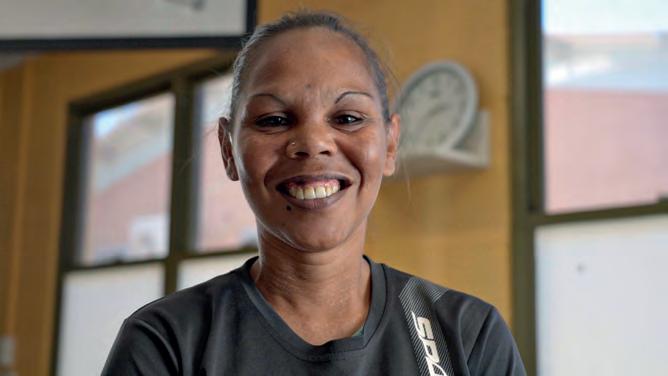
Since early 2023, Specsavers has been supporting Congress by providing hearing aids for Aboriginal and Torres Strait Islander peoples who live with hearing loss but aren’t eligible for government support.
“From different parts of the industry, there’s a lot of great work being done to support First Nations communities with hearing services and we’re proud that we’ve been able to contribute to this through our wonderful partners at Congress,” Taylor says. “We are thankful for the amazing work they do every day, improving the lives of their patients through better hearing."
Currie says there’s nothing else like it and Specsavers provides a philanthropic donation because it believes it's an important, valued service, and there's no other way these clients would access hearing aids.
“The support from Specsavers has been brilliant,” she adds. “Board members have visited to find out about the issues which enables them to advocate for this group of disadvantaged hearing-impaired people. They can provide support and raise awareness of endemic preventable hearing loss in communities and that all assists in ongoing services in remote areas.”
Most of the Specsavers Hearing Aid Bank clients are not working although some have casual work, and many have disabling hearing loss which makes working and learning hard. “Most have had hearing disability from maybe their first year of life, and few will have accessed hearing aids,” Currie says.
“If they did, they might have used a bone conductor at school, often then rejecting devices in their teen years. They fall through cracks in the hearing health system and then, perhaps after having children, they can’t hear their kids cry or talking and seek support for a hearing aid.”
Most clients seen at Congress live in vulnerable, lower socio-economic situations and are mainly from the town camps.
“Many have conductive hearing loss and even though they might have had it for 60 years, it’s still audiologically conductive (site-of-lesion) and considered not “permanent”, as it’s theoretically repairable. Using this terminology disadvantages those with conductive loss in accessing mainstream NDIS, school and other supports,” she says. This is a bugbear of Currie’s. “When does conductive hearing loss become permanent? If someone's had it for 60 years, surely, it’s permanent?" she says.
“We want to know when a child or an adult is disabled because of their hearing loss and need a comprehensive approach that recognises medical and disability aspects of hearing loss.”
The Specsavers Hearing Aid Bank’s work in its first 12 months focussed on urban areas. Starting in 2025, the bank will visit more of Congress’s remote communities. “We’re aiming to assist new adults who wouldn’t have otherwise accessed hearing aids. This is incredibly important because it destigmatises hearing loss and hearing aids as not being just something the elders wear but something that’s good for younger people too."
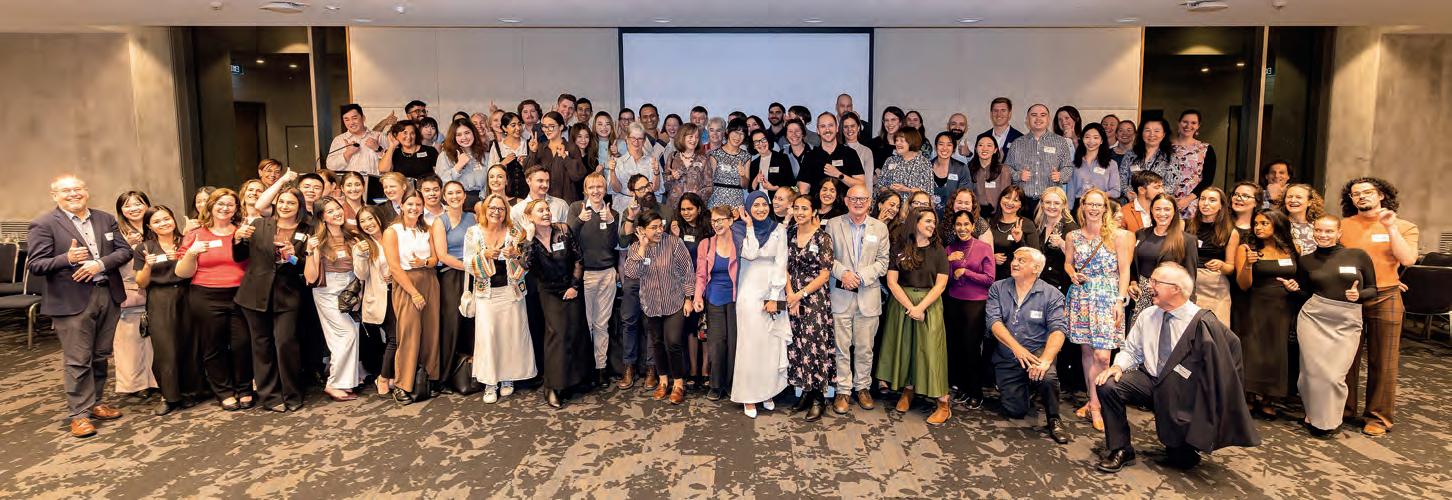
The clinic might still be the mainstay for hearing practitioners, but many other avenues also lead to rewarding careers in the field. HPA asks experienced practitioners and university lecturers for their career advice.
Audiologist Dr Fadwa Alnafjan once worked in clinical practice and while she enjoyed the role, her curious mind and yearning to impart skills and knowledge to the next generation prompted a change in her career path to teaching and research.
Now, as an audiology lecturer and researcher at Macquarie University, she believes she has the best of both worlds; pursuing her love of teaching while having time for research that may improve patient outcomes.
“I’ve always had an inquisitive side, a desire to explore research, and I’ve always loved teaching,” she says. “Having practised is a bonus because when you’re teaching and trying to break down complex concepts to students, being able to draw from personal experience helps.”
Dr Alnafjan’s journey highlights the evolving nature of the audiology profession beyond traditional private practice, with broader and dynamic choices such as industry roles, clinical training, and research now viable career paths for qualified practitioners.
Audiologists can work in government, regulatory roles, community health centres, hospitals, not-for-profit organisations, universities (teaching and research), and hearing research institutes. There’s also industry in clinical roles, research, product development and marketing roles, audiology associations and professional bodies, and education (mainstream schools or schools for the deaf).
“For students, diverse career pathways are embedded in clinical placements as well,” Dr Alnafjan says. “In clinical education units, we introduce the students to different service delivery models. These include hospital, private practice and regional roles, as well as outreach or remote services. This allows them to see paediatric and adult settings as well as diagnostic and rehabilation.”
Even in clinical practice, the options are numerous. Practitioners can specialise in aural rehabilitation and hearing aid fitting for adults, branch into tinnitus care, cerumen removal, paediatrics, diagnostic audiology and industrial deafness. Plus, there’s vestibular practice, customised earplugs, and more. In many cases, in private practice especially, the audiologist is a multi-skilled and multi-talented jack of all trades, covering several of these fields.
Dr Alnafjan says working in private practice is the most accessible and immediate path for graduates. Big demand for adult hearing services drives this and makes those opportunities more available, she adds.
“While our traditional roles as providing hearing aids and working in hospitals are really important and rewarding options, there's also emerging and expanding opportunities, which are exciting,” she says.
ABOVE: About 100 alumni, the audiology teaching team, and audiologists and scientists previously or currently teaching in the course attended the 25th anniversary celebrations of the University of Western Australia’s Master of Clinical Audiology in May 2025.
“These include industry roles with hearing aid and cochlear implant manufacturers, clinical training, research and regulatory roles. There's a lot of pathways.”
Dr Alnafjan says there is a shift to teaching, research, and industry. “Technology is expanding the range of roles, including hands-on patient care, technical service delivery, innovation, and research,” she says. “There’s also growing interest and transition into hybrid roles combining clinical practice and research. People undertake a PhD and do research part-time while working a few days clinically. Benefits include shaping the future practice of audiology.”
Dr Alnafjan encourages students to consider regional or remote opportunities which are rewarding personally and professionally, saying it’s beneficial for students to explore different parts of Australia while they are young.
Subjects taught are also expanding including paediatrics, ethics, and artificial intelligence. “Paediatrics has always been a part of audiology programs but there is now a greater focus on family-centred care, and interdisciplinary collaboration,” she says.
“AI is integrated into clinical practice now, including hearing aid technology and automated audiometry. Automated audiometry and using machine learning to personalise hearing aids aims to change service delivery models and improve the impact on users.

“It’s important though to critically evaluate the benefits and limitations


of emerging technologies as there is a risk of over-reliance or reduced clinical judgement.”
Dr Alnafjan says there’s growing interest in the autonomy of running clinics under franchise models. “These roles offer flexibility and provide clinicians with a greater say in clinical decision-making, service delivery, and the business side of operations,” she adds.
“A franchise wouldn't be something we’d encourage a student to take on immediately post-graduation but it's important for them to see it as a viable pathway, especially if they are interested in having autonomy. There’s also inbuilt marketing, administration and business assistance.”
She believes that, in future, hospital audiology roles might grow, partly due to more adults receiving cochlear implants and other implants.
“Already audiologists are an important part of the surgical team and contribute more to patient care than in the past, from preoperative care to being in the operating room with the ENT during surgery, and post operative care,” Dr Alnafjan says.
She encourages students to be proactive and open to options and aware there are rewards and challenges for every path.
“For example, in private practice or hearing aid provision they get skill and clinical development, especially in their early career stages, and exposure to different case types but there may be less flexibility in those roles, and there can be demanding workloads,” she says.
Independent audiologist, Mr Andrew Glynn, also has some sage advice. His experiences working and travelling shaped his career and broadened his horizons, having worked for corporates in clinical, educational and management roles, locuming around Australia, in a hospital with ENTs in London and locuming around England.
During a lecture on careers to audiology students at The University of Melbourne more than ten years ago, he provided some guidance he believes still holds true today.
“I urged them to learn how to remove wax, and this was before they taught it in universities,” he says. “There’s nothing worse than having a client come in for a hearing test or hearing aid adjustment who has wax and you have to fob them off to a doctor or ENT for cerumen removal.
“I also advised graduates to travel – there is great potential for locum work in countries like the UK. And I advised working in corporate and independent audiology.”
Glynn, who now owns two private clinics, Hear In Karingal and Hear In Cranbourne, in Melbourne’s south-east, feels it is important for graduates to gain experience in big networks before considering the flexibility and reduced sales pressure of independent audiology.
“It’s a good idea to work for one of the big chains because they have a proper, structured first year program,” Glynn says. “You might have multiple supervisors, but you should take that as an opportunity to learn. When I did in my graduate year, I had 13 supervisors.

“It was great because I got to learn everything they did well, and some things they did poorly, and took all those little things that they taught me and put that into my toolkit.
“Working in a fast-paced clinic can help sharpen your skills.”
Glynn opened his practice in 2021 during the COVID pandemic and emphasises the importance of online bookings and the growing demand for cerumen removal.
“The online booking system was vital and a gamechanger,” he says.
“At first I got 60% of my bookings through it, and four years later, I get about a-third since most are now due to word-of-mouth.”
He is concerned about potential oversupply of audiologists and says there’s a need for universities to monitor the number of places they offer

“I tell our students that audiologists can contribute a lot to the wellbeing of the people they see. We help our clients to participate in life.”
and to carefully plan and support new graduates. He also advocates for more independent practices to support graduates.
However, he is optimistic about the future of audiology in Australia and stresses the importance of collaboration within the industry.
When choosing a location to open an independent practice, he advises researching geographic areas as the importance of location is vital. His two clinics are in an area of a growing demographic, Cranbourne and Frankston.
“Our company is like a footy club or a church; we want followers and supporters to join. We’ve had so many referrals from family members of our clients having wax removal because from those children, their parents and grandparents come in,” Glynn says.
Further north, University of Queensland senior audiology lecturer, Dr Barbra Timmer tells her students that – with audiology increasingly being multidisciplinary and a growing prevalence of conditions such as hearing loss in the population – there are both more positions and a wide range of positions available.

She says there are also many areas in which audiology could play a bigger part, such as vestibular/balance and tinnitus management.
The University of Queensland's Masters of Audiology Studies program covers different clinical practice models, work-ready skills and transition to practice as a graduate audiologist.
“There are pros and cons to all areas of audiology. The UQ clinical placements allow students to gain clinical experience in a wide array of clinics to see which aspects of audiology they enjoy most,” she says.
Patient-centric remains key
A wider range of subjects is also taught now such as working in a multidisciplinary team, ethics and advocacy, and person and family-centred care.
“There are typically more employment options available for adult rehabilitative audiologists, and this remains a strong trend. The mainstay is still clinical practice, with national hearing clinics being the largest employer,” Dr Timmer says.
“It is inevitable that technologies such as OTC hearing aids and AI will impact on audiology but the key to good clinical practice is still the person-centred, human interaction between an audiologist and their patient or client.
“I don’t think there are clear differences in the qualities that an audiologist requires for different career pathways. The beauty about audiology is that it does cover so many different career options. I think it is more the aptitude and interest of the audiologist that gives them greater satisfaction in the various career pathways open to them.
“I tell our first-year students that audiologists can contribute a lot to the wellbeing of the people they see. We help a child on a path that will promote reading, education, and employment.
“We can prevent social isolation and loneliness. We help our clients to participate in life and we can save the health care system millions of dollars every year.
“Audiology is not just about hearing, or tinnitus or balance. It’s about communication, healthy living and wellbeing.”
Charles Darwin University (CDU) senior audiology lecturer Mich Thornton says there is such a rich diversity of career options in audiology, from aural rehabilitation to diagnostics in adults or paediatrics, and niche areas such as cochlear implants.
“Audiology students can also go into research and teaching or take on roles in public health. Rural and remote positions offer the opportunity for a wonderful career across a broad range of
“We encourage students to consider the areas of audiology that really spark something in them,” Thornton says. “Some students may find a real heart for paediatrics, while others may find vestibular audiology intriguing. We also encourage students to be flexible as these interests may change, and other opportunities may come up.”
Placements and supervisors are often a gamechanger in developing ideas about their future career, Thornton adds.
“We tell them their university learning is the beginning of their professional journey; always keep learning and as a graduate intern, you are still developing your skills. Don't be afraid to ask for help, every professional has been at the beginning of their career and audiologists want to support the growth of our profession.”
CDU encourages students and new graduates to take part in as many professional development opportunities as they can, Thornton says. “Continue to use the reflective practice skills you have developed throughout your course and keep true to the principles and standards of audiological practice,” they say.
“Many of our students have embraced the opportunity of regional and rural careers, which is fantastic. We have also taken on industry feedback by including comprehensive learning about health promotion along with Indigenous knowledge and wellbeing, making our graduates well placed to understand and address community needs.”
Audiology has long been a profession of rapid and exciting technological advancement, Thornton adds. “While the exact technology we deal with will continue to change, the audiologist's job of using the latest technical tools to ameliorate the effects of hearing loss for individuals remains in essence the same,” they add.
“By embracing lifelong learning and adaptability, audiology graduates can expect to enjoy career opportunities long into the future.”
CDU ensures its students are prepared to work in all areas of audiological practice and need to be able to balance technical expertise with excellent people skills, Thornton says. And they shouldn't go into diagnostics thinking that person-centred care doesn't apply.
“If they are passionate about making a difference in the profession, becoming a clinical supervisor is one of the best and most rewarding ways to add to the future of our profession,” they say.
“Also, the audiology course at CDU is unique in Australia, providing flexible study options for students who haven't traditionally been able to study audiology.
“Online and part-time study plans provide a viable option for students who have previously had an interest in joining the profession but have faced barriers to studying audiology due to living outside of metro areas, or significant caring or work responsibilities.”
Clinical director of audiology at the University of Western Australia (UWA), Associate Professor Helen Goulios, who has worked in clinical practice, research and teaching, also emphasises the evolving career opportunities, and the importance of informal research conducted

a lot of resources into them and if they take opportunities elsewhere, often their first employer will want to support them, because they want them to come back.
Awareness strategies needed
She notes a potential oversupply of audiologists by 2030 but stresses that almost 70% of people with hearing loss who are eligible for hearing services through the government HSP do not access audiology services. A/Prof Goulios feels the profession should focus on public awareness strategies that promote the importance of the impact of hearing loss and seeing an audiologist.
“When I graduated, you went and worked for the Commonwealth Government, and there were a few private practitioners, but now my graduates go everywhere,” she says.
“They go to Commonwealth Government, state government, community health centres, paediatric and adult hospitals, not for profit organisations like Earbus Foundation, independent practice, and a lot want to work as clinical support for the manufacturers because there are opportunities internationally and nationally.”
Dr Alnafjan says the future of audiology in Australia is bright, thanks to ongoing advancements and diverse career options.

In May 2025, The University of Western Australia celebrated the 25th anniversary of its Master of Clinical Audiology course, run by the School of Human Sciences.
Associate Professor Helmy Mulders said the course was created due to a request from the Western Australian audiological community, who experienced an unmet need for well-trained audiologists to serve the public. They approached members of the UWA Auditory Laboratory, Professor Don Robertson, Dr Robert Patuzzi and the late Dr Graeme Yates who developed and launched the course.
About 100 alumni attended the celebration along with the audiology teaching team (A/Prof Helen Goulios, A/Prof Helmy Mulders, Dr Robyn Choi and Ms Emma Chaffey), audiologists and scientists previously or currently teaching in the course as well as Senior Deputy Vice-Chancellor Prof Tim Colmer and Prof Silvana Gaudieri, Head of the School of Human Sciences.

A/Prof Goulios, who has been involved in the course since its inception, summarised its history followed by a panel discussion she chaired comprising former graduates, Ms Mona Helmsley (Audika), Ms Emma Chaffey (UWA), Dr Andre Wedekind (Medical Audiology Services) and Mr Luke Austin (Hearing Australia).
Panel members said they had selected the course based on the resumes of inspiring and excellent teaching staff and small cohorts which created an enjoyable learning environment and resulted in life-long connections.
They viewed the future of audiology positively and suggested changes in view of AI and OTC hearing aids were not to be feared but embraced. Panel members said the profession was evolving towards more counselling and emphasised that audiologists are more than just hearing aid dispensers but are at the forefront of client hearing health.
Cochlear implant numbers were increasing, tinnitus counselling was important and the personal relationship between practitioner and client could not be overstated as an important factor for audiological rehabilitation, they said.
Dr Wedekind discussed the exciting horizon of advanced scope for audiologists, expanding their expertise. He said they were perfectly positioned to take pressure off long waiting lists for specialised services.

Cochlear’s new world-first “smart” hearing implant features internal memory and upgradeable firmware. Cochlear’s RAVIN NAND, and Melbourne surgeon PROFESSOR ROBERT BRIGGS, explain the breakthrough.
t’s been 47 years since Australia’s first cochlear implant surgery, and for more than 30 of those, Melbourne ENT surgeon Professor Robert Briggs has dedicated his career to changing the lives of more than 1,000 severely to profoundly deaf people using this groundbreaking technology.
“Without doubt, cochlear implantation is the area of medicine that I've seen the most change in and I think probably the most benefit for patients,” he says. “It’s a very rewarding area to work in.”
There have been many advances over the decades as the ages of those receiving implants has reduced dramatically, enabling earlier, more successful intervention. Older patients are also increasingly seeing benefits and opting for implants to improve quality-of-life. And implantation is now performed as a day surgery with some patients back at work the next week.
Renowned Australian company Cochlear pioneered – and is driving – this evolution. During the past 10 years, the company has been working diligently on its latest and most advanced iteration – the Cochlear Nucleus Nexa System – which general manager for Australia and New Zealand, Mr Ravin Nand, launched to the world in early June 2025.
Speaking to HPA , Nand says Australia and New Zealand are among the first markets to access this groundbreaking technology, described as one of the biggest developments in cochlear innovation. This is because the capability of the implant will no longer remain fixed for the rest of the patients’ life.
“The difference is this is a ‘smart’ implant which is upgradeable, so over time users can continue to access technology advancements as they become available through firmware upgrades to the implant,” Nand says. He likens it to “a smartphone for hearing”, with users able to benefit from new features and innovations over time.
The Nucleus Nexa System is also the first implant with built-in memory, allowing the personalised hearing settings (MAPs) of the user to be securely stored directly in their Nexa implant’s in-built memory, he adds.
Prof Briggs, who has had early access to the technology as part of a clinical trial, agrees it is a distinct departure from the fixed nature of traditional models, now allowing programs to be stored in the internal device, as well as the external sound processor. The sophistication lies in the internal memory.
“The new chipset is a big leap forward,” Prof Briggs says.
While previous devices could be stimulated effectively – performed externally with a laptop – their internal function and capability to upgrade the system were not possible.
“Data could not be updated from software or firmware,” he says.
“Now, the implant’s like a computer in the head due to the chips’ capabilities and future readiness. It can also sense and respond to changes in the
environment and adapt to different noise levels.”
Nand says it’s not just one new product but a whole system launch, with 10 years’ R&D behind it, that will provide the bedrock of future Cochlear-made implants going forward.
While sound quality in the current (software) program is similar to previous generations, Prof Briggs believes future research may improve quality and speech understanding.
“It will open up new possibilities for patients to the many digital innovations that are to come and improve their quality-of-life,” Nand adds. “It’s a gamechanger because of more sophisticated internal electronics, greater capabilities and being future-ready.”
Smart implant stores the patient’s MAP
Delving into why the Nucleus Nexa System is so different, Prof Briggs says the program containing a person’s individual hearing ‘MAP’ was previously based only in the external sound processor and on the audiologists’ laptop.
“That program, which is the key to converting sound into an electric signal, is now stored in the internal implant as well as the sound processor,” he says.
“If a person needs a new processor, they don't have to go to an audiologist and have it mapped. They can just replace it with a new, blank sound processor, and it automatically uploads from the internal smart implant.
A patient with the new hearing implant which automatically adapts to the environment to enhance hearing.

That’s a major change in the technology.”
The chip in the implant stores each recipients’ personalised hearing settings (MAPs) and programs that optimise functionality of the implant. This matches their auditory abilities and provides optimal speech intelligibility. Settings are programmed for each electrode to determine the most comfortable and effective levels of sound for the recipient to perceive. The chip optimises how the implant processes and delivers sound, allowing the user to hear and understand sounds more clearly.
The patient’s ‘MAP’ of their hearing goes from the implant out to the processor, and in future, upgradeable firmware (software) can be passed to recipients using the platform.
“It’s a big change in the way the service is delivered and is a more convenient way for patients to access that service because the MAP is stored on the implant in their head,” Prof Briggs says.
Nand adds: “The program is essentially the brain of the system. It defines how you listen by determining which listening environment you're in, which program to use, and when to activate our Forward Focus feature from an app which enables recipients to hear better what is in front of them.”
Over the past year, Prof Briggs, a University of Melbourne Clinical Professor who operates at The Royal Victorian Eye and Ear Hospital, The Royal Children’s Hospital, and St Vincent’s Private Hospital, has implanted the system in about 30 patients in a clinical trial.
“Patients have been very happy with the outcomes and reliability,” he says. “Mostly they're using the same stimulation parameters as the previous generations of implants which we know work extremely well. Technically the surgery is the same so it’s straightforward for surgeons to implant.”
Nand says the implant can monitor its own performance and maximise battery life based on usage. Its upgradeability allows for future firmware updates using the Nucleus Smart App and further improvements in battery life. Voice prompts also make it easier for deafblind users to update via apps.
Prof Briggs says outcomes are improving as each new generation of implants come to market. Previously, people had to be severely to profoundly deaf to qualify for implantation, but this had now shifted to include those with hearing loss who struggle to hear even with the most powerful hearing aids.
But he believes not enough adults are presenting for cochlear implants and hopes Cochlear’s new system will attract more. “There needs to be more awareness of the benefits,” he says.
Nand says only 10% of adults who could benefit from cochlear implants receive them.
He encourages state governments to address this unmet need, noting that Victoria funds two cochlear implants, one on each side, per person if clinically indicated while other states only fund one per patient.
“We encourage governments to have their funding programs keep pace with growing demand and need,” he says. “Victoria is amazing, it has no constraints on providing access. There are other states across Australia where funding is limited.”
Prof Briggs says that, without doubt, two ears are better than one, and hearing is better if a patient has two implants. “It’s the same for hearing aids – you don't have a hearing aid in just one ear,” he says.
Nand says about 99% of Cochlear’s implants from 20 years ago have survived, and more recent ones have a 99.9% survival rate.
“As new models come out, they’re more reliable and offer better output, and now we've taken a step further to open different possibilities,” he adds.
The new platform is compatible with low-energy Bluetooth, AirPods and Auracast.
Additionally, Cochlear has improved the battery life from 12 hours on a standard rechargeable battery to 16 to 17 hours on a mini rechargeable battery.

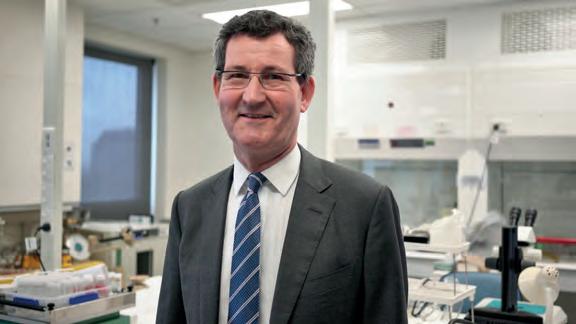
People with existing cochlear implants won’t have them removed and replaced with the newer version, Prof Briggs says. Instead, they will have access to technology improvements when upgrading their sound processor. He says there’s an increasing number of elderly patients with severe, profound hearing loss who are becoming isolated and can't communicate. Some have had cochlear implants and derived great benefit.
Studies are also increasingly demonstrating benefits of cochlear implants and hearing aids in reducing cognitive decline, he adds.
But the fear of surgery, including the mistaken belief cochlear implantation is a form of brain surgery, may scare some patients, Prof Briggs says. More awareness is needed that the internal part, which includes the receiver-stimulator and electrodes, is surgically placed under the skin behind the ear and ontop of the skull.
From June, everyone in Australia, New Zealand, Hong Kong and Bo’ao in China, who receives a Cochlear brand cochlear implant, may choose to receive the new system, Nand says. Other countries including in Europe will follow.
“It’s funded in Australia under the same program as existing implants, making it accessible to both public patients, and private patients through private health insurance,” he adds.
Prof Briggs concludes: “We hope it will not only provide better function, but also better sounds – quality and clarity.”
Cochlear implant pioneer, Professor Graeme Clark AC, who has seen the new system, said: “It is truly remarkable to me that in 2025 we have the development of the world’s first ‘smart’ cochlear implant system. This latest innovation is not something I would have imagined more than 40 years ago.
“Advances like these make hearing loss even easier to manage for both doctors and people who use the device. I am excited about the potential this leap forward in technology offers to help improve the lives of the millions of people all around the world living with hearing loss.”
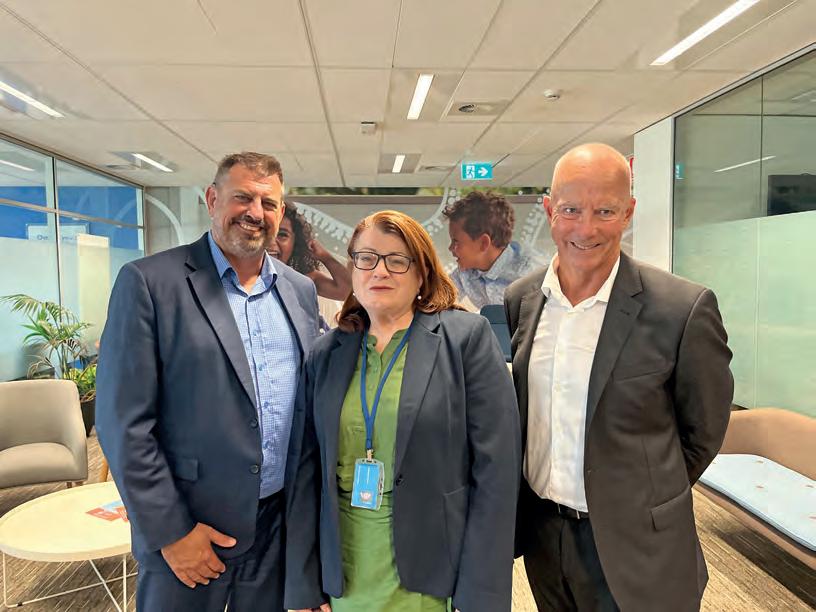
PROFESSOR SCOTT AVERY, a profoundly deaf Aboriginal man descendant from the Worimi people and a trailblazer in Indigenous disability health and wellbeing, has been appointed to the Hearing Australia board.
As “an early traveller to the land of quiet”, Professor Scott Avery “grew up surrounded by a silent stigma that hearing ‘loss’ was a bad thing to have happen to you”.
“I’ve long abandoned that narrative and embraced being gifted by the silence,” he says.
“As someone with hearing impairment (although I prefer to say I am deaf or ‘gifted by the silence’) and Aboriginal, I hope to be able to bring my experiences of navigating the hearing health sector both to Hearing Australia’s programs for First Nations people and also more broadly to support its mission of providing world leading research and hearing services for the wellbeing of all Australians.”
The ‘culture is inclusion’ message which came from the First Nations community helped him accept his deafness.
“From time-to-time, I used to struggle with the negative language of hearing loss and hearing impairment, and my Elders would say to me, ‘you’re deaf for a reason, you know’, he says.
“Now I own my deaf world, it is my natural place, and I see myself ‘gifted by the silence’, rather than having lost something.”
Dr Scott, as he is known in his community and by his students, is Professor of Indigenous Disability Health and Wellbeing in the School of Public Health, University of Technology Sydney. He also led the first Indigenous disability course at Western Sydney University.
His teaching of Indigenous disability and inclusion is grounded by research he conducts alongside the First Nations disability community.
He is a policy adviser on Indigenous cultural approaches for the inclusion of people with disability, is Professor in Residence at the First Peoples Disability Network and his book, Culture is Inclusion, has influenced national policy
across Closing the Gap, Australia’s Disability Strategy, and the Disability Royal Commission.
Dr Scott has represented disability organisations several times on the Convention on the Rights of Persons with Disabilities at the United Nations in New York and Geneva.
“It’s always an honour to be asked by your community to represent them at these events but you must ensure the occasions don’t get the better of you, so you can make the most of the connections that will help advance your advocacy once the ‘carnival moves on’,” he says.
This is an impressive list yet asked what he feels is his greatest achievement, he diverts to a book that advocates for and shares the stories of Aboriginal and Torres Strait Islander people with disabilities. After travelling the nation, collecting stories from First Nations Australians who live with disability, his book, Culture is Inclusion: A narrative of Aboriginal and Torres Strait Islander people with disability', was published.
“The thing I am continually proud of, and privileged to have been a part of, is this book,” he says. “These are the stories that I collected from Aboriginal and Torres Strait Islander people for my PhD research.
“For me it’s more than a reference book, it’s a totem that connects me with the people I met and places I went.
“I never set out to be anything but a faithful voice for the Aboriginal and Torres Strait Islander people with disability who shared their stories with me. I am hitting a stage in my career where I’m looking to share my knowledge and experiences with others. It will be pointless blazing a trail if no one is going to follow.”
The greatest honour and achievement is to have the respect of his community, he adds, stating that if connection with community stays strong, other accolades will take care of themselves.
Born and bred in Wollongong where he lived until his early 20s, Dr Scott was raised by a single mum. “It was sometimes a bit of a struggle, but we got by,” he recalls.
Otosclerosis was diagnosed in his mid-teens when his class underwent hearing and sight tests. “I wasn’t aware at the time, but when they said I had mid-range hearing loss, it made sense,” he adds. “The version of otosclerosis I have is a rare one that killed my cochlea.
“I managed to get by until I finished high school on a ‘watch and wait’ brief. But it started to have an impact at university, and this was when I started going down the tech road.”
He received his first hearing aids around age 18 to 19 from ENT surgeon, Professor Paul Fagan OAM. “I remember sitting in a chair hearing a squeak and jumping up going ‘what was that?’ and hearing a bird tweeting. But otherwise, I tried not to make too much a deal of it.
“Prof Fagan has recently retired. It’s crazy to think that I have been around
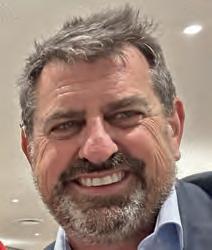
“I hope that my being on the board sends a message to those who are nervous about coming to hearing health that you are going to be OK.”
Professor Scott Avery Hearing Australia

him longer than my wife and most people I know, outside of my direct family. I was young and working out what was going on, so didn’t know about Hearing Australia then.”
Dr Scott had cochlear implant surgery while at university but the otosclerosis eventually “killed the implants” and he reverted to hearing aids. He was the first in his family to attend university and both of his daughters now have university degrees, one from his alma mater at the University of Wollongong.

ABOVE: Dr Scott Avery’s book, Culture is Inclusion, won Western Sydney University’s Deputy Vice-Chancellor’s Research Excellence Award Indigenous Research 2022.
Being raised in a stoic family, he was “not allowed to get too big for his boots”. “There’s a running joke that mum would never say anything to our face but would share the good news with Aunty Jennifer,” he says.
He achieved a Bachelor of Commerce (Hons) in Economics – training that always seems to pop up in his work – followed by a Graduate Diploma in Law, a Master of Applied Science (Health Information Management) doing research with large health data systems, a Master of Business Law (half corporate governance and half public health law) and a PhD on Indigenous disability.
His work now focuses on systemic change for First Nations people and disability inclusion.
“My career before this was mainly in the health sector as a researcher of health status and behaviours, or in health education. This led to working with Aboriginal health organisations on an early version of the National Aboriginal and Torres Strait Islander Health Plan in 2012-2013,” he says.
“What was striking was that disability was not mentioned in the health plan.”
By this time, he was forming a community connection with the First Peoples Disability Network and started helping them with policy submissions which led to a job. “Once I was in there, we realised ‘no one is going to do this research for us, we will have to do it ourselves’; that led to me starting a PhD, and the rest is history.”
The main reason he was appointed to the Hearing Australia board was his connections with Aboriginal communities and community organisations which work to aid respectful relationships that achieve better hearing health outcomes.
“As an early adopter of hearing impairment, I have sat in the testing booths, had the operation, signed up for the technology, and have come out the other end,” he says.
“I know the client journey as I have done it myself. If anything, I hope that my being on the board sends a message to those who are nervous about coming to hearing health that you are going to be OK.”
Dr Scott says Hearing Australia has a long-standing reputation of working to improve the hearing health of Australia’s Aboriginal and Torres Strait Islander peoples. “I regularly heard of this when I was doing my own

“Understanding why there are many with undiagnosed hearing impairment is fundamental in Closing the Gap.”
Hearing Australia also provides hearing services, assessments and devices to First Nations adults under the Community Service Obligations program and in 2023-2024, saw more than 7,000 adults.
The organisation works closely with Aboriginal and Torres Strait Islander communities, providing services in urban, regional and remote locations, making over 1,000 outreach visits to 223 communities in 2023-2024.
These visits included counselling and guidance to support listening and communication; regular review of hearing and communication needs; fitting, and helping people make good use of hearing devices; and ongoing clinical care and device repair service.
When former National Disability Insurance Scheme and Government Services minister, Mr Bill Shorten appointed Dr Scott to the board, he said his qualifications and lived experience with the challenges of hearing loss would enable him to make a significant contribution to Hearing Australia’s work.
Board chair, Emeritus Deputy Chancellor of Macquarie University, Ms Elizabeth Crouch AM, says Dr Scott’s connections with First Nations communities add great depth to its work and focus on improving ear and hearing health of First Nations peoples. “His experience and leadership will ensure Hearing Australia continues to deliver high quality, life changing hearing services for all Australians,” she says.
Dr Scott adds: “Inclusive governance matters when it comes to improving access to hearing services. I’m looking forward to working closely with community groups in raising what matters to them in their hearing heath and wellbeing."
A-quarter of Australia’s audiologists attended

More than 1,000 delegates attended the nation's premier hearing health event of the year in Adelaide in April. Here’s a glimpse of the action.
Aquarter of Australia's audiologists were treated to exceptional presentations that educated, upskilled, reskilled and enlightened them at the Audiology Australia 2025 Conference.
Attendees at the event from 1-4 April 2025 at the Adelaide Convention Centre heard from more than 140 speakers including high calibre international and local keynote speakers, whose talks reflected the conference theme of 'unite, innovate and evolve together'. Local and international audiologists, researchers, clinicians, consumers, ENT surgeons and industry representatives shared their knowledge, research, stories and experiences.
A buzzing trade expo with 57 exhibitors, pre-conference masterclasses, poster presentations and social events including a welcome reception and a conference dinner at Adelaide Oval, rounded off a “week of learning, connection and celebration for the profession”, according to Dr Bec Bennett.
Dr Bennett, chair of the Audiology Australia (AudA) National Conference Program Committee, said the organisation took a different approach this year and invited members to self-nominate to join the committee.
“It was wonderful, we received many applications and chose a diverse group of passionate, experienced people representing different areas of audiology,” she said. “They brought knowledge and understanding of what members on the ground were looking for in learning experiences and what topics they were interested in.
“While we covered a lot of old favourites, we also introduced new innovative streams and topics that haven’t been explored as much at previous conferences including artificial intelligence, neurodiversity, lived experience and new concepts for adult rehabilitation, all of which proved very popular.”
The committee tailored content relevant to 10 different personas of people who attend AudA conferences so there would be plenty for everybody and something for everyone, she said.
Dr Bennett said the program offered practical hands-on content, such as keynote presentations that unpacked the broader landscape of mainstream AI, complemented by a masterclass on using AI tools in clinical practice.
She highlighted that many audiologists regularly see clients who report

hearing difficulties despite having normal audiograms – a group that can be particularly challenging to support due to the current lack of clinical guidelines and evidence-based interventions.
The conference program tackled this important issue head-on, with sessions where researchers shared emerging findings, clinicians offered practical insights from their own experiences, and a dedicated masterclass provided an opportunity for audiologists to take a deeper dive into how to better support this population in everyday practice.
Jointly opening the conference, Dr Barbra Timmer, AudA president, said a highlight was upskilling across these various topics, and connecting and reconnecting with colleagues. “We’re all here to celebrate and encourage strength in unity across many different areas of audiology that we all represent,” she said.
Founder of the NeuroTech Institute and FOCUS, Dr Fiona Kerr, who is globally recognised for her work on the cognitive science of human-human and human-technology interaction and how this informs practice, gave the opening plenary.
She described ‘brain-to-brain coupling’ or interbrain synchronisation which links one person’s brain to another, like neural networking. “When I sit down and chat to you, our brains are chatting too,” she said. “Sometimes you can guess what the other person’s going to say because we know each other so well we get what’s called direct ‘pre-emptive synching’.”
Along with oscillation of voice frequencies, this was why one person could


“We found physical activity declined more rapidly in older adults with hearing loss, suggesting hearing loss is a key risk factor for becoming less physically active over time,” he said.
Dr David Maidment Loughborough University, UK
pick out the voice of someone they’re close to among others. “When we hear a friendly voice, especially of someone we trust, it creates a sense of belonging and increases brain waves such as gamma, theta, delta and alpha, lowering anxiety and improving complex decision making," Dr Kerr said.
She said research showed that respectful empathy with patients benefits both parties – it creates higher cognitive synching, which improves the clinician’s ‘radar’ for picking up nuanced information, and increases the information given by the patient. This leads to better decision making by both, including higher compliance or adoption of new habits, and the neurophysiological connection reduces stress in patients.
Dr Kerr’s research has also found that such neural synchrony is built in work teams, with highly connected stable teams having high levels of ‘interactive team cognition’ leading to being able to perform well in novel situations, and exchange tacit experiential information efficiently. High performing teams also adopt ‘microbehaviours’ of smiling at each other, listening to each other, offering opinions, and giving credit where due. The most important aspect of a highly efficient team is respect for each other, she said.
Dr Simon Kos, chief medical officer ANZ at Microsoft, Australia, said people were drowning in data but AI was like a co-pilot that could reduce administrative burden. It could transcribe meetings in real time, help with teaching, training and transcribe patient notes including allocating roles due to personal awareness of who is in the room. It was good at documentation, administrative and summation work and AI agents could be a virtual reception.
Medical knowledge doubles every 73 days
One concern is that consumer AI services often run offshore which can train on your data, Dr Kos said. Enterprise AI services, by contrast, are paid services where people choose their model, the service runs in their secure tenant, and their sensitive patient data remains theirs onshore and is not used to train AI.

Paediatric audiologist
Brooke Rose buying art designed for people with hearing differences from artist

While it should not be used for diagnosis and treatment, due to regulatory issues and inconsistency in answers, generative AI could be used for indirect patient care such as care co-ordination, research, summaries and the business of health care such as HR and rostering.
“Medical knowledge doubles every 73 days so generative AI can be helpful searching for guidelines, citations, articles, and to drive evidenced-based care, retrieving information in real time,” he said.
“Generative AI is new and disruptive and has enormous potential, good and bad. The technology is moving faster than regulation or legislation. AI medical scribes are unregulated so be cognisant of and cautious about that.
“Generative AI is creeping its way into audiology practices. There’s this sense that AI is something other people are doing, and I can think about it later because I’m not planning to use it yet.”
He said AI would surface in digital tools practitioners already use and responsible adoption needed strategy and planning. “Everyone’s baking generative capabilities into software that is already in use so it will start showing up in organisations that might not have considered themselves as at the forefront or ready to adopt AI, even small clinics,” Dr Kos said.
“If you’re a large organisation you need to think about what your policy is –some are even setting up AI governance groups. Even smaller clinics should think about what it means. Single practitioners are the most ready to jump on board because AI helps with the crushing administrative overload.
“While the science of medicine will be tackled by computers, the art of medicine is human interaction. AI won’t hold the patient’s hand and break the bad news, and it won’t be accountable. There will still be a role for clinicians for decades more,” he said.
Dr Brent Edwards, National Acoustic Laboratories director, said ChatGPT could help provide summaries for patients, and big data was necessary to train AI so it was capable. “In audiology this comes from hearing aids, client records and office CRMs (customer relationship management) systems,” he said.
“All can potentially be accessed by hearing device companies and organisations with multiple practices, to understand patients better, enabling more personalised treatments. Clinical data is highly valuable and used to train systems.”
Millions of sound files, from Google and YouTube videos, for example, inform data on speech, to train hearing aids on what speech is so it can be extracted from background noise. “AI makes it possible for hearing aids to do things that would normally require human intelligence. Hearing aids now also include DNNs (deep neural networks) trained with millions of real-life sound scenes,” he said.
Dr Edwards said healthcare uses of AI included training practitioners,
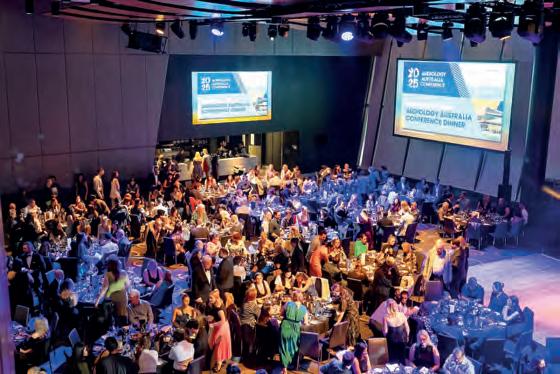

screening and triaging patients, diagnosing conditions, advising on treatment, assisting with administrative work, and monitoring and motivating patients.
NAL’s Virtual Persona AI web tool, for example, enabled virtual patient interactions to train audiologists in communication and counselling.
“AI is going to transform hearing healthcare because there’s a looming crisis as the population is growing and ageing but the number of audiologists is falling flat and not growing,” he said.
“There’s going to be a crisis of care. More people will have hearing loss but there won’t be enough practitioners. The power of AI is it can offload some of your work so you can see more clients without lowering your level of care.
“If you don’t do it, OTC hearing aids will; if you can’t meet the growing demand, other organisations will. It behoves us to provide the best care and make sure we can meet that demand so patients don’t go elsewhere.”
Chartered psychologist, senior lecturer and researcher Dr David Maidment from Loughborough University, UK, has spent a decade working in hearing research. He said there is a growing body of evidence showing that hearing loss in older adults is associated with multiple health conditions.
“There is mounting evidence that hearing loss is related to reduced physical activity and physical function, so the greater your hearing loss, the greater your declines in physical activity, and this is independent of ageing,” he said.
“One study found older adults with hearing loss engaged in five to 35 minutes less physical activity a day than those without hearing problems. This results in up to 10 years of accelerated ageing, or becoming frail at an earlier age.
“This then increases the risk of developing more life-threatening chronic health conditions such as diabetes, cardiovascular disease and dementia.”
Dr Maidment’s team analysed data across 20 years in those with hearing loss versus those with normal hearing of the same age and found physical activity declined much more rapidly over time in older adults with hearing loss. One possible reason is that social withdrawal, caused by communication difficulties, may reduce people’s motivation or confidence to stay active.
“This suggests hearing loss is a key risk factor for becoming less physically active over time,” he said.
In a separate study, Dr Maidment’s team also found that hearing aids can act as a facilitator to exercise, as they help reduce problems with communication,

appointments. These include tips on how to talk about physical activity, how to refer patients to other health professionals, and how to advise on hearing aid use during exercise.
“Many audiologists told us they felt unsure about how to encourage healthy lifestyle changes in clinic,” he said. “They didn’t want to overstep by giving medical advice or risk offending patients.”
But there are ways to start the conversation gently. “Audiologists might say something like, ‘I’ve noticed you’ve mentioned being less active lately, have you thought about how hearing aids could help?’ and then offer some information that could help.”
Audiologist and cognitive neuroscientist Dr Hannah Glick, an assistant professor at University of Northern Colorado, has studied brain changes in ageing adults.
“The brain is very (neuro)plastic well into our 90s but even in very mild hearing loss, we start to see the brain begin to change structurally and functionally,” she said. “The brain is valuable real estate and if auditory parts of the brain are not being stimulated as they normally would due to hearing loss, they may be repurposed to process vision or touch.
“We see pretty shocking neuroplastic brain changes happening even in mild hearing loss in older adults: auditory regions of the brain atrophy and there’s reduction in grey and white matter volumes over these areas.”
From her studies on function using non-invasive EEG sensors on the scalp to record electrical activity, she has investigated effects of intervention.
“When we fit hearing aids well to best audiological practice in mild early-stage hearing loss, we see a reversal in this re-purposing of auditory cortex by other senses, and a reduction in recruitment of areas of brain involved in attention and executive function,” Dr Glick said.
“The brain adapts and reverts to what it would be in normal hearing within six months of hearing aid treatment.”
In moderate and severe hearing loss, her research found that some adults wearing poorly fit hearing aids show persistent re-organisation – the brain stays re-organised and does not revert. “So, the quality of the fit matters, and likely the earlier the intervention takes place, the better,” she said.
In severe and profound hearing loss, users with good speech perception tended to not show as much reorganisation as poor users. “We think in severe and profound hearing loss, the brain recruits hearing areas of the brain to process vision to rely more on lip-reading and visual cues,” Dr Glick said.
“Our research shows that well-fit hearing aids can also improve cognitive function, including processing speed, working memory and executive functioning. In fact, our preliminary data shows that adults with hearing loss who have poorer cognitive functioning actually derive greater cognitive

reduce risk of falls. We need to be having those conversations with our adult patients.
“Audiologists can provide education about the many holistic health benefits of treating hearing loss. Improving communication matters, but cognitive and physical health are important too.”
Twenty-seven-year life expectancy difference
Tasmanian audiologist, Ms Dani Fox, called on her colleagues to help close the gap in services for people with intellectual disability. Ms Fox has twin daughters, including one with Down syndrome who wears bilateral hearing aids.
“Last year’s Disability Royal Commission found there was a 27-year gap in life expectancy due to systemic failures in the health system, historically and that is continuing today; 27 years,” she said. “I just want to pause and let that soak in.”
She provided tips on how audiologists could improve consultation and treatment for these patients which HPA will reveal in a future feature.
US patient advocate, Ms Shari Eberts who has hearing loss and has worn hearing aids since her 20s, said her father had the same hearing loss. He wore hearing aids, but the stigma he felt from using them isolated him and destroyed his happiness, she said.
“When I had my own kids, I saw them watching me hide my hearing loss and I didn’t want to pass this onto the next generation, so I started wearing my hearing aids all the time. This helped me at dinner, at the movies,” she said.
“When you have hearing loss it’s not just your hearing that’s affected, you may see yourself as less worthy, and because hearing is an active activity it’s exhausting. It’s hard work but it’s worth it.”
Eberts appealed to practitioners, “if you are the first hearing care provider for a patient, that sets the tone. Your role is paramount in helping us overcome stigma and use our devices to embrace a new phase of life.”
Tips to improve the patient experience included having the patient’s partner attend, have a hearing loss-friendly waiting room with reception staff who speak slowly and clearly, tell them the audiologist will come and get them when it is their turn, and caption the TV.
“Spend a day in our shoes – wear a hearing aid and learn about assisted listening devices so you can teach us,” Eberts said. “Support the community – attend a local hearing loss support group for insights into what we’re worried about.”
People who missed out on attending the conference can register to watch recordings of keynote speakers and gain CPD.
See audaconference.com.au/virtual-attendee

Awards presented to practitioners ranged from recognising those who had dedicated decades to the profession to those just starting out and others whose research is making a difference. Delegates also voted for their favourite presenters, posters and exhibition stand.
Award winners:
• Life Membership: Professor Louise Hickson
• Fellow Membership: Dr Bec Bennett
• Certificate for Outstanding Service: Dr Colleen Psarros, Ms Amarjit Anand and Ms Jane MacDonald
• Outstanding Audiology Australia Supervisor: Mr Julian Shen and Mr Paul Dayton
• Audiology Australia Internship awards: Ms Caris Bogdanov and Ms Aishah Segu Mohamed
• Barbara Skurr Scholarship: Ms Athena Koutsovasilis, Ms Adriana Dall'Est, Mr I Gede Adi Wiguna, Ms Chloe Baxter, Mr Dean Aidan Young Han Choo, Ms Sarah Daniel, and Ms Udari Kalpana Jayatissa Batuwatta Gamage.
Program and exhibit awards:
Oral presentation awards:
• Laurie Upfold Young Presenter Award: Ms Lucy Shiels
• Best clinical presentation award: Ms Erin Keach
• Best early career research presentation award: Ms Jermy Pang
• Best research presentation award: Dr Paola Incerti
• People’s choice oral presentation award: Dr Meg Miklosvary
Poster presentation awards:
• Best clinical poster: Ms Laura Drexler
• Best early career research poster: Ms Marisa Poulos
• Best research poster: Mr Jason Gavrilis
• People’s choice poster: Ms Shermin Lim
Best (people’s choice) trade exhibit stand: Starkey
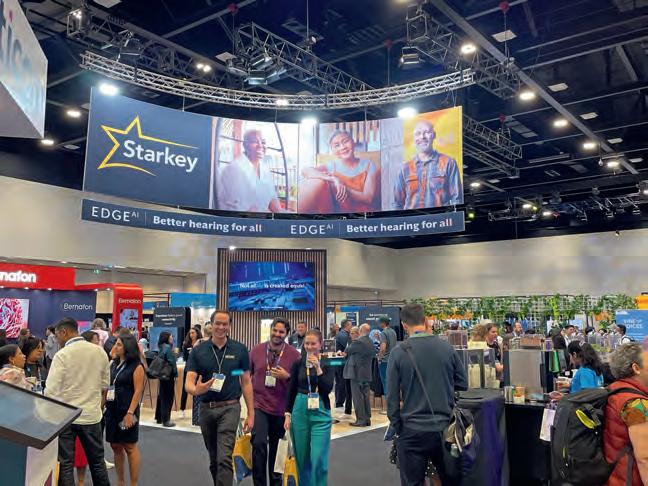

The Australian Society of Otolaryngology Head & Neck Surgery (ASOHNS) has celebrated its 75th annual scientific meeting in Sydney. The diamond anniversary was a time to reflect on past achievements and welcome future developments.
More than 600 ear, nose and throat surgeons from around Australia and overseas flocked to Sydney in March 2025 to celebrate 75 years of scientific advancement in the field and hear about current innovations at the forefront of the ENT landscape in Australia.
The ASOHNS 75th annual scientific meeting recognised the enormous improvements in otolaryngology and assembled a diverse group of international keynote speakers across a range of subspecialities and a dynamic group of local experts.
“It was the largest stand-alone annual scientific meeting in the society’s history,” said Ms Melissa Coward, ASOHNS membership manager. “The only time we have had more delegates in attendance was when we hosted the Asia Oceania Otorhinolaryngological Head and Neck Surgery Congress (AO ORL HNS) which is held every four years in the Asia Oceania region.”
The Australian event was at Sydney’s International Convention Centre from 28 to 30 March 2025. The Otorhinolaryngology Head and Neck Nurses Group conference was held in conjunction with the surgical meeting.
Renowned local and international experts shared invaluable insights and advancements in otolaryngology, head, and neck surgery.
Additionally, conference delegates participated in interactive workshops and hands-on sessions, offering practical skills and techniques to improve practice and enhance patient care.
Gene therapy, inner ear therapies and ear wearables for health monitoring were just some of the current advances discussed.
Otology sessions covered topics including:
• Cochlear MRI signal and hearing outcomes in vestibular schwannoma patients
• Cochlear implant outcomes associated with the treatment of vestibular schwannoma
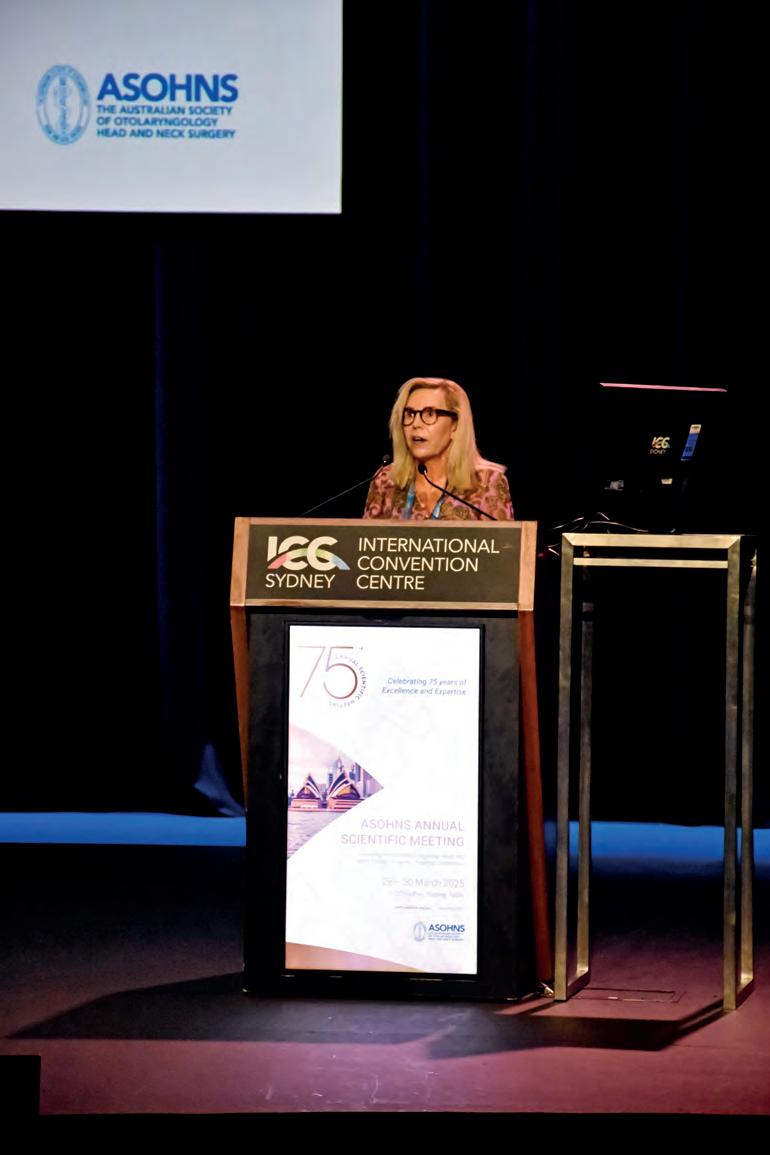
Cambridge, he is also clinically active in tertiary care otology.
His current research interests focus on cochlear implants, inner ear therapies and genetic hearing loss, and ear level wearables for health monitoring.
Prof Bance gave two key-note presentation. One was on gene therapy for hearing loss and lessons from his genetic hearing loss clinic. The other asked what could be done to improve outcomes for cochlear implants.
He made global headlines, including in Hearing Practitioner Australia May 2024 when he revealed he had performed a pioneering gene therapy transfer during surgery on a British baby aged 11 months with profound genetic deafness.
Six months after the single intracochlear injection delivered via a one-off infusion into Opal Sandy’s right ear, her hearing had “improved close to normal hearing levels” in the treated ear, doctors said at the time. They said results showed “dramatically improved hearing to normal levels” in Opal.
Prof Bance, chief investigator of the British segment of the gene therapy trial, said in a statement at the time: “These results are spectacular and better than I expected.
"Gene therapy has been the future in otology and audiology for many years and I’m so excited that it is now finally here. This is hopefully the start of a new era for gene therapies for the inner ear and many types of hearing loss.”
ASOHNS president Dr Julie Agnew presented Dr Ross Harrington his award at the gala dinner.

Prof Bance was the inaugural Professor of Otology and Skull Base Surgery at the University of Cambridge in 2017, a role he still holds today. Before that he was Professor and Chair of the Division of Otolaryngology-Head and Neck Surgery at Dalhousie University in Canada.
He completed his residency in Toronto and UCLA in 1995, followed by a skull base fellowship in Manchester. He has supervised numerous clinical Fellows in Toronto, Halifax and Cambridge and many PhD and postdoctoral students.
Before this he ran a large middle ear mechanics and bone conduction hearing mechanics laboratory in Canada and developed middle ear imaging tools using optical coherence tomography (OCT).
Professor Bance has published 236 peer reviewed papers, and several book chapters.
He is immediate past president of the section of Otology of the Royal Society of Medicine in the UK, is chair of the British Cochlear Implant Group, and has received a lifetime achievement award from the Canadian Society of

A surgeon who has been a vital part of the otolaryngology community in Australia over the past 44 years received a prestigious honour at the ASOHNS meeting.
ASOHNS acknowledged Dr Ross Harrington for his services to otolaryngology, head and neck surgery in Toowoomba, Queensland with the 2025 ASOHNS Society Medal for Distinguished Service to ASOHNS.
Dr Julie Agnew, ASOHNS president presented Dr Harrington with the medal.
“ASOHNS and his patients sincerely thank Ross for his services to both regional and national otolaryngology,” she said.
Dr Harrington spent his childhood in the small outback town of Richmond, northwest Queensland, and said he had a strong belief that people could aim high, regardless of where they came from. He graduated from the University of Queensland in 1972 and received his Fellow of the Royal Australasian College of Surgeons (FRACS) in 1978, being the first registrar to train at both the Royal Brisbane Hospital and Princess Alexandra Hospital.
In 1979 he travelled to Wales for a fellowship before returning to Toowoomba in 1980 where he has been a vital part of the otolaryngology community over four and a half decades, Dr Agnew said.
Dr Harrington started an appointment as a visiting medical officer at Toowoomba Base Hospital in 1982 and resigned the position in 2024.
He was one of the first surgeons to perform endoscopic sinus surgery in Queensland, attending one of David Kennedy's first endoscopic sinus courses in Chicago, and then helped introduce endoscopic sinus surgery to Queensland.
In recent years, since retiring from surgery, he has maintained a dizzy and vestibular clinic in Toowoomba and Brisbane.
He is an advocate of the VHIT (Video Head Impulse Test), a clinical assessment of the vestibulo-ocular reflex (VOR), and was instrumental in educating younger doctors, emergency physicians and ENT surgeons on exciting developments in dizziness and vestibular care.
In September 2024, one of his last duties as a specialist was to present grand rounds at Toowoomba Base Hospital and co-edit a paper with Professor Michael Halmagyi, Royal Prince Alfred Hospital neurologist and Professor of Neurology at the University of Sydney.
Dr Harrington is a past Queensland State Chair of ASOHNS and a director of training for Toowoomba Hospital. He was instrumental, along with Dr Garrett Fitzgerald, another founding ENT consultant in Toowoomba, in setting up a regional training position, which has now expanded to two positions at Toowoomba.


DR NICK SCHNITZLER’s survey confirms a gap in otological examination skills among junior doctors in Australia and identifies a strong desire for more structured ENT training.
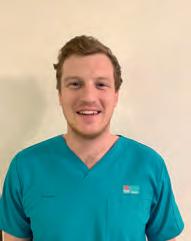
“A
LACK OF CONFIDENCE IN INTERPRETING AUDIOLOGICAL DATA MAY RESULT IN MISSED REFERRALS FOR PATIENTS REQUIRING SPECIALIST HEARING ASSESSMENTS OR FURTHER INVESTIGATION.”
DR NICK SCHNITZLER
Ear-related conditions are a common presentation in primary care and emergency settings, ranging from benign wax impaction to potentially serious infections. Accurate ear examination, particularly otoscopy, is an essential skill for junior doctors, enabling appropriate diagnosis and treatment of common ear pathologies. Misdiagnosis or missed diagnosis can lead to unnecessary use of antibiotics or delayed treatment, contributing not only to individual harm but also to the broader issue of antimicrobial resistance.
Our study aimed to evaluate the competency of junior doctors in basic otological examination and to understand the extent of Ear, Nose, and Throat (ENT) exposure received during their medical school and post-graduate training. We assessed the ability to perform otoscopy, identify ear pathology, interpret tuning fork tests, and analyse audiograms. The survey-based, cross-sectional study also sought to explore the correlation between exposure to ENT training and confidence in clinical ear examination.
STUDY DESIGN AND OBJECTIVES
BELOW: Only half could correctly identify pathology from otoscopic images or identify anatomical landmarks of the ear.
Participants in the study included recent medical graduates working in public hospitals in New South Wales and the Australian Capital Territory. The survey focused on several key competencies: knowledge of ear anatomy, recognition of common pathologies seen on otoscopy, as well as interpretation of tuning fork tests
and basic audiogram analysis. The primary aim was to assess the current state of ear examination skills among junior doctors. The secondary aim was to identify whether there was any relationship between perceived or demonstrated confidence and the level of ENT exposure during undergraduate and post-graduate training.
We received responses from 83 junior doctors. The findings highlighted several areas regarding clinical competence in otology:
• Only 50% of respondents were able to correctly identify pathology from otoscopic images.
• Just 10% could correctly identify anatomical landmarks of the ear.
• Those who had undertaken an ENT rotation during pre-vocational training were three times more likely to correctly identify pathology compared to those with no ENT exposure beyond medical school.
• 74% of respondents had less than one week of ENT experience during medical school.
• Almost all respondents agreed or strongly agreed that more ENT exposure was needed during their undergraduate education.
• Only 50% could correctly interpret tuning fork tests.
• Less than 30% were able to correctly identify all forms of hearing loss on

These findings underscore a significant gap in training and clinical exposure to ENT-related skills during both undergraduate medical education and early postgraduate years. Given that ear complaints are frequently encountered in general practice and emergency departments, this gap has the potential to impact patient outcomes through misdiagnosis, delayed treatment, or over-prescription of antibiotics.
A lack of confidence in interpreting audiological data such as tuning fork tests and audiograms may also result in missed referrals for patients requiring
specialist hearing assessments or further investigation.
Given the logistical and resource constraints within medical education, a full ENT rotation for every student is not always feasible. Many hospitals, particularly in rural and regional areas, do not have dedicated ENT departments. As such, alternative educational strategies must be explored and implemented.
One solution is to embed structured ENT teaching in the medical curriculum, with a focus on core otological skills. This could take the form of interactive workshops, online modules, and anatomy tutorials that emphasise visual pattern recognition for otoscopic findings.
Including simulation-based learning and virtual reality training tools may also bridge the gap by allowing students to practise otoscopy in a controlled, repeatable, and scalable way.
For junior doctors, ENT education can be incorporated into pre-vocational training, regardless of whether they are based in a hospital with an ENT department. Virtual or remote teaching sessions, run by ENT specialists or registrars, could ensure consistent access to otology teaching. These could cover common presentations, red flags for urgent referral, and practical diagnostic techniques. Additionally, the development of standardised teaching resources, potentially shared across universities and training hospitals, could support a uniform baseline of competency in ear examination.
Our study confirms a substantial gap in otological examination skills among junior doctors in Australia and identifies a strong desire for more structured ENT training. Addressing this shortfall is crucial to ensuring early career clinicians are confident and competent in managing common ear-related presentations.
ABOUT THE AUTHOR: Dr Nick Schnitzler is an unaccredited ENT registrar working in NSW. The study was published in the Australian Journal of Otolaryngology online on 29 October 2024. It can be viewed at theajo.com.




DR ANNE-MAREE DALEY advises on what makes an excellent audiometrist and audiologist, describing the qualities that set them on a pathway for a lifetime of providing quality care.

THE PATH TO BECOMING AN EXCELLENT AUDIOMETRIST OR AUDIOLOGIST INVOLVES THE ONGOING DEVELOPMENT OF CRUCIAL INTERPERSONAL AND ORGANISATIONAL SKILLS.
DR ANNE-MAREE DALEY
he audiology profession offers a consistently growing career path due to the increasing global population and the subsequent demand for qualified clinicians.
Aspiring audiometrists and audiologists in Australia will find clear guidelines on the necessary qualifications for formal education. However, the journey from a competent clinician to an exceptional one is paved with less tangible but equally crucial skills.
This article delves into six key qualities that distinguish truly excellent audiometrists and audiologists throughout their professional development.
1. CLEAR AND STRONG COMMUNICATION

ABOVE: Compassionate care, clear communication, effective problem-solving, and respect for the client experience are key qualities and skills that are needed.
Excellent audiologists are skilled communicators who prioritise their clients' comfort by explaining examination procedures clearly. When discussing diagnoses and treatment options, they avoid jargon, using simple language to ease anxiety, especially when discussing hearing loss and the array of hearing aid choices. They patiently explain the benefits of their recommendations, guide clients through device care, and encourage questions, fostering a relationship built on trust and understanding.
2. REFINING ORGANISATIONAL SKILLS
Maintaining meticulous client records, streamlining workflows, and adhering to schedules are hallmarks of a professional and effective practice. Continuous improvement in these areas ensures a smooth and positive experience for clients.
3. EFFECTIVE PROBLEM-SOLVING
Finding the right solutions: Clients seek audiologists to resolve their hearing concerns. Outstanding clinicians employ critical thinking to thoroughly assess each situation and identify the best course of action. They are persistent in challenging cases and know when and why a referral to another
specialist is necessary. Moreover, they are adaptable, willing to revisit and revise solutions, such as hearing aid choices, if the initial recommendation isn't meeting the client's needs.
Providing reassurance and support. Clients often come with a range of emotions surrounding their hearing health. Exceptional audiologists understand this and offer ample reassurance to those feeling anxious or overwhelmed by their diagnosis. They patiently address all questions about treatment options and may need to reiterate information about different hearing aid choices to ensure clarity. Rushing through appointments can leave clients feeling unheard. Instead, a patient and thoughtful approach ensures clients feel supported and that recommendations are tailored to their individual needs.
Connecting with clients: The foundation of excellent audiology practice lies in compassionate client interactions. This involves deeply understanding and empathising with each individual's unique circumstances. Beyond diagnostic skills, the best clinicians actively demonstrate kindness,
empathy, and approachability, building rapport and fostering a sense of genuine care that encourages client trust and loyalty.
Respecting time: While audiology practices have performance goals, excellent audiologists understand the importance of their clients' time. Poor time management leading to long waits and delayed administrative tasks can negate even the best clinical skills, driving clients to seek more punctual practitioners who demonstrate respect for their schedules.
Ultimately, the path to becoming an excellent audiometrist or audiologist involves the ongoing development of not only technical expertise but also crucial interpersonal and organisational skills that prioritise compassionate care, clear communication, effective problem-solving, and respect for the client experience.
ABOUT THE AUTHOR: Audiologist of 20 years Dr Anne-maree Daley is an educator with the Australasian College of Audiometry. She has published articles on hearing health in local newspapers and professional journals including co-authoring research in the Australian and New Zealand Journal of Audiology.
RICHARD WEBB says once-in-a-generation reform of infrastructure underpinning the superannuation payments system should be delayed to avoid chaos and confusion.

“THE NEW REGIME WILL BE CHALLENGING FOR SOME BIG BUSINESSES, BUT SMALL BUSINESSES WILL BE PARTICULARLY IMPACTED BY THE CHANGE.”
RICHARD WEBB
Amongst all the regulatory pressures facing or soon to be facing small businesses, one of the most significant has gone largely under the radar – Payday Super.
Designed to ensure eligible employees are paid their superannuation entitlements by their employers as part of their regular pay cycle, Payday Super is due to take effect from 1 July 2026. But just over a year out, there are concerns that the superannuation industry, and small businesses, are simply not ready for the change.
What may seem like a simple update to payment processes is much more complicated than many people realise. But inside the industry there is widespread agreement that a delay in the rollout is essential.
That’s why CPA Australia (Certified Practising Accountants), along with several other professional associations, have urged the government to postpone the rollout of the Payday Super regime for up to two years to give the superannuation industry and small businesses sufficient time to meet the new requirements.
If the timeframe is not extended, a period of chaos could ensue as businesses try to fulfil their compliance obligations through a system that potentially can’t deliver. There is widespread support for the goals of Payday Super, including that it will be much easier for individuals to monitor their superannuation payments. Currently, employers have up to 28 days to pay super contributions at the end of each quarter, but this will become just three days under the rules of Payday Super.
One of the concerns is that the superannuation transmission network will not be ready to manage the increased traffic by July next year. The network is fundamental to the successful delivery of Payday Super and if it is not adequately prepared for the transition, it would create a perfect storm of confusion and uncertainty for both employees and employers.
The practicalities of delivering once-in-a-generation reform of the infrastructure underpinning the superannuation payments system are

The weight of expectation on small businesses is another good reason to delay the rollout.
The new regime will be challenging for some big businesses, but small businesses will be particularly impacted by the change. The regime requires considerable upfront cash flow and system changes, posing difficulties for small businesses that may lack the resources and technological proficiency to adapt swiftly.
Small businesses already operate in an environment of intense regulatory burden and this additional requirement will add to this pressure. As such, in addition to delaying the introduction of Payday Super, we believe the government should introduce a grace period to allow employers to receive education and support without immediate penalties for non-compliance.
Delivering Payday Super reliably, fairly and without unintended consequences must be the priority.
Lately I’ve heard reports of individuals receiving unsolicited financial advice relating to the recent drop in superannuation balances caused by global trade disputes.
The superannuation balances of millions of Australians plunged following the imposition of global tariffs by the United States, because the success of many funds is partly linked to the performance of global stock markets.
Super account holders have been receiving unsolicited calls claiming to provide a super health check. These calls include an offer to review the individual’s super fees and insurance costs, as well as
their investment options, to help grow their balance.
These unsolicited calls may often be merely unscrupulous but could also be criminal in their intent. There’s a high chance you’ll be getting unlicensed financial advice, or these calls could be designed to steal your personal information – or your superannuation savings. If you receive a call like this, hang up straight away. The call may come from a withheld number or another suspicious-looking number like a mobile. From the descriptions I’ve heard, the caller will be vague or attempt to skim over where they claim to be calling from, such as using an acronym. They may also ask ‘have you heard about this’ to gauge your level of knowledge about the issue at hand and try to create a sense of urgency that you need to act quickly.
Do not make any decisions about your superannuation without first talking to a licensed financial adviser or your superannuation fund. Australians can get legitimate financial advice about their superannuation and other retirement savings by engaging a licensed financial adviser.
In doing so, individuals are encouraged to check the official Financial Advisers Register on the moneysmart.gov. au website. If you think it could be an attempt at fraud, report it to the ACCC-run Scamwatch at scamwatch.gov.au.
ABOUT THE AUTHOR: Mr Richard Webb is CPA Australia’s superannuation lead. CPA Australia is the nation’s leading professional accounting body. See cpaaustralia.com.au
Hearing loss is more common and more severe in survivors of stroke than in the general population.

BY DR KELLY MILES
With one in four Australians predicted to have hearing loss by 2050 – and one in four also expected to have a stroke in their lifetime – the intersection of these two conditions demands attention. Urgent action is needed to understand what this overlap means for stroke survivors and their rehabilitation, and how it challenges conventional approaches to hearing health.
Stroke and hearing loss often coexist, yet their combined impact remains poorly understood and under-recognised. Research shows a bidirectional relationship: sudden sensorineural hearing loss can increase the risk of stroke, while stroke has also been shown to lead to sudden sensorineural hearing loss. Hearing loss is also reported to be more common and more severe among survivors of stroke compared to the general population.
AUDITORY
Beyond the audiogram, stroke also affects central auditory processing. Standard hearing assessments may not detect hearing difficulties as they typically focus on peripheral hearing loss. However, central auditory processing difficulties can significantly impact everyday communication, particularly in noisy environments. For example, Koohi and colleagues found that 55% of stroke survivors in their study aged 61–80 exhibited a combination of peripheral hearing loss and auditory processing disorder, while 40% of younger survivors (aged 18–60) presented with auditory processing disorder.
Cognitive changes are common
following stroke, further complicating hearing and communication challenges. Up to 70% of survivors of stroke experience difficulties with information processing speed, around half encounter difficulties with attention, and most will experience changes in cognitive functioning to some extent. Crucially, these changes may impact auditory processing - particularly in noisy environments - where maintaining attention and separating speech from background sounds is crucial.
Anecdotal accounts show that many survivors of stroke experience increased difficulty and stress when trying to communicate in noisy environments. They often report that background noise makes it challenging to stay engaged in social interactions, leading to withdrawal and reluctance to socialise. They also describe how difficulties communicating in noise can act as a barrier to returning to work after a stroke and participating effectively in day-to-day tasks in the workplace.
Empirical studies support these claims, demonstrating that survivors of stroke are particularly prone to difficulties listening in noise when the target speech and background noise share similar acoustic properties; for example, the challenge of trying to follow a conversation in a café where multiple people are talking simultaneously. These difficulties have been linked to cognitive function in stroke survivors, with those experiencing attention difficulties more likely to have problems with background noise that contains informational speech.
While more research is essential to fully understand the relationship between stroke and hearing difficulties, hearing practitioners can take several practical steps right now:
• Broader screening: Incorporate speech-in-noise testing, auditory processing screens, and actively listen for red flags like, “I just get tired of listening,” or “I avoid noisy places now”.
• Collaboration with stroke teams: Foster relationships with local rehabilitation clinics, neurologists, and speech-language pathologists. You may be the only hearing specialist involved in a patient’s care.
• Tailored interventions: Hearing aids may help, but assistive technology,

communication strategies, and environmental modifications may also support better outcomes.
• Evidence-based interventions: Advocate for interventions supported by empirical evidence. Stay informed of emerging research and incorporate proven strategies into practice.
• Family involvement: Educating carers and families about post-stroke hearing and listening challenges may enhance communication success at home and reduce frustration.
• Elevate the voices of stroke survivors: Amplify the experiences and perspectives of stroke survivors and advocate for unmet hearing needs. The intersection of stroke and hearing loss is common yet often overlooked. As our population ages, more individuals will live with both conditions, underscoring the urgent need for stronger care pathways, more research into post-stroke hearing needs, and better integration of audiology into stroke recovery.
Stroke teams must recognise that hearing is not just an added consideration – it is fundamental to rehabilitation, reconnecting with loved ones, and regaining independence. Proactively addressing the hearing needs of stroke survivors is crucial to enhancing their recovery and quality of life.
NOTE: References will appear in the online version of this article.
Name: Dr Kelly Miles
Qualifications: A hearing scientist and stroke survivor.
Affiliations: The ECHO Lab, Macquarie University Research Centre.
Location: Sydney, Australia
Years in industry: 10
Dr Miles welcomes insights from hearing professionals about their experiences in supporting stroke survivors’ hearing health.
ages, more people will live with both conditions.
“PROACTIVELY ADDRESSING THE HEARING NEEDS OF STROKE SURVIVORS IS CRUCIAL TO ENHANCING THEIR RECOVERY AND QUALITY OF LIFE.”

Ms Sarah Steele has been awarded a PhD scholarship (TMS) neuromodulation technique to explore feedback loops between the brain and the ear, with promising implications for tinnitus treatment. Steele has a Master of Clinical Audiology and has presented her research at national conferences. She lectures in the Bachelor of Speech and Hearing Sciences and serves on several university committees as an elected Higher Degree by Research (HDR) representative. Steele founded the HDR Soundboard to connect HDR candidates in hearing, language, and communication. She is a strong advocate for inclusion, accessibility and women’s representation



Ms Melanie Eagle is the new board chair of The Royal Victorian Eye and Ear Hospital. She brings a wealth of strategic leadership across various sectors including government, healthcare, and the not-for-profit sector, and has a proven track record of leadership and innovation. Eagle starts her role on 1 July 2025, after the completion of Dr Sherene Devanesen AM’s 10-year term. Eagle is also inaugural and reappointed chair of the Disability Worker Registration Board and a board member at St Vincent’s Medical Research Institute, Melbourne. She was previously inaugural chair of Respect Victoria, CEO of LiverWELL (formerly Hepatitis Victoria) and director at Alfred Health.
GN Hearing in Queensland, has been promoted to sales role was created to further support the independent channel and was one of many new positions aimed at enhancing its service and commitment to partners. With more than 18 years of account management experience across various industries, John possesses a wealth of expertise and a steadfast commitment to the success and growth of independent businesses. Since joining GN Hearing in 2020 as an account manager, his understanding of the dedication to grow a business has been key to establishing and cultivating strong partnerships. He continues to support the Queensland independent market as Queensland account manager.
leveraging GN Hearing's innovative solutions to support in delivering exceptional outcomes. Rydon is passionate about hearing healthcare and brings a customer-centric approach as well as strategic expertise to his new role.

To list an event in our calendar please email helen.carter@primecreative.com.au

2025
COMPUTATIONAL AUDIOLOGY VCCA 2025
Online 26-27 June computationalaudiology.com
JULY 2025
VICTORIAN TEMPORAL BONE SURGICAL COURSE
Melbourne, Australia 18-19 July asohns.org.au
HBA BUSINESS SEMINAR 2025
23 July
Perth, Australia hearbusiness.com.au
AUGUST 2025
JCU CAIRNS TEMPORAL BONE DISSECTION COURSE
Cairns, Australia 1-2 August asohns.org.au
ANZHNCS ASM 2025
29-31 August
Adelaide, Australia asohns.org.au
SEPTEMBER 2025
ENT EMERGENCY SURGERY REFRESHER COURSE
Sydney, Australia
6 September asohns.org.au

2025
OTL 2025: 78TH NZSOHNS ASM 7-9 October Hawke's Bay, New Zealand asohns.org.au
CI ADVOCACY IN ACTION 2025 16-17 October Brussels, Belgium ciicanet. net.org
AUDIOLOGY UNCHAINED 2025
Independent Audiologists Australia 17-18 October Mooloolaba, Queensland independentaudiologists.net.au
2025
ASOHNS FRONTIERS 2025 3-15 November Hobart, Australia





Renee H. Aerospace Engineer
